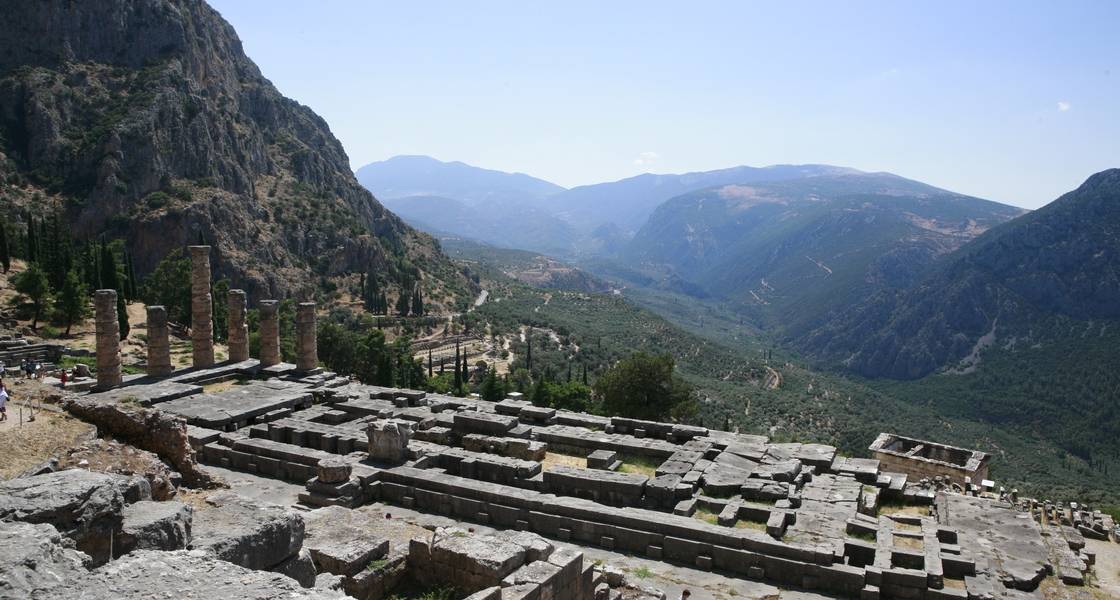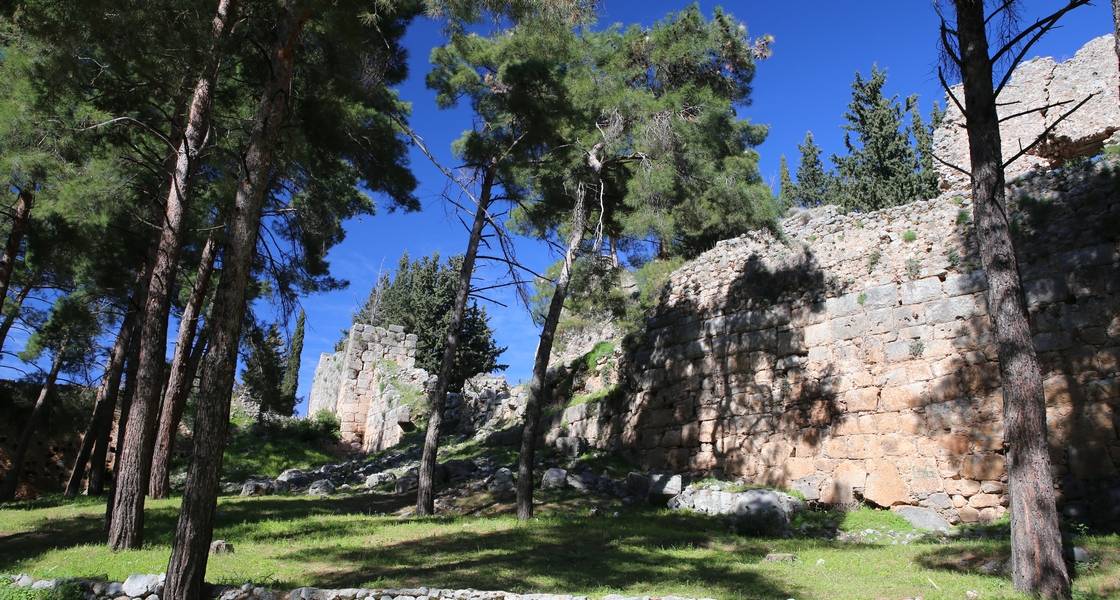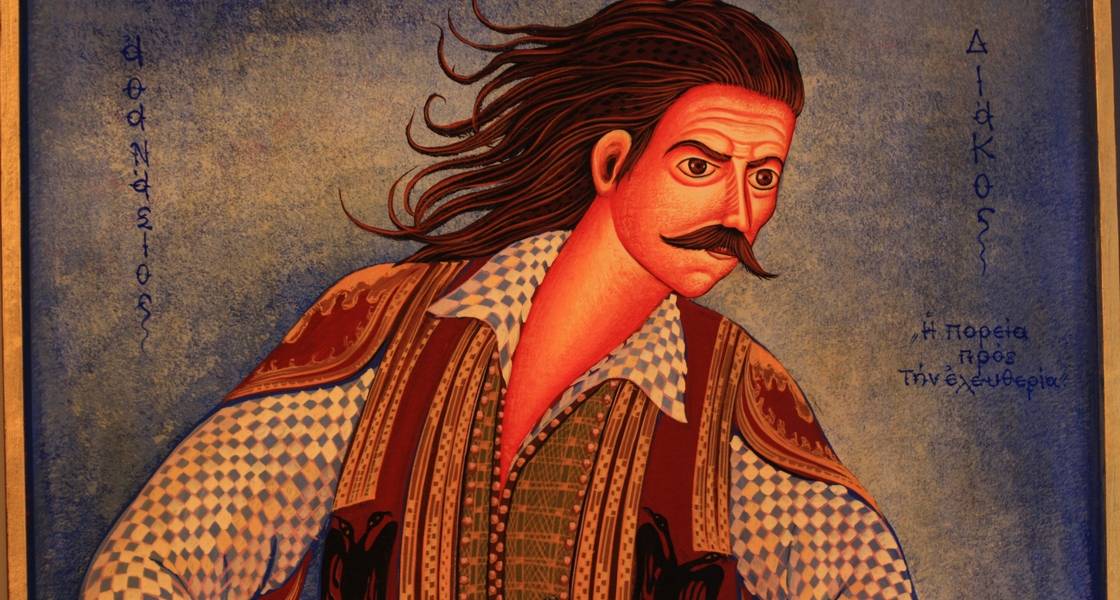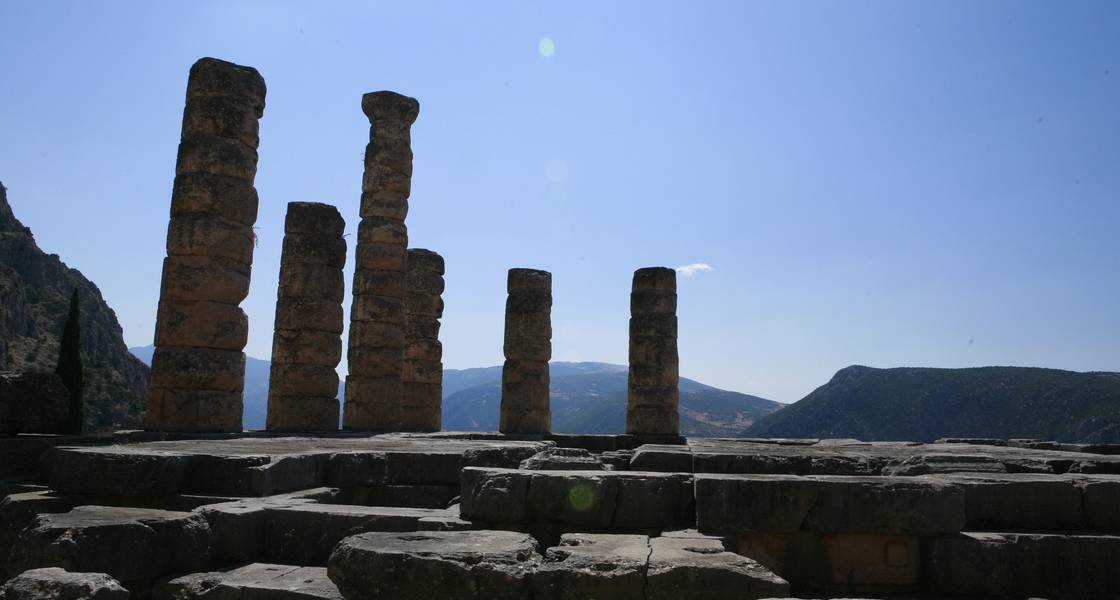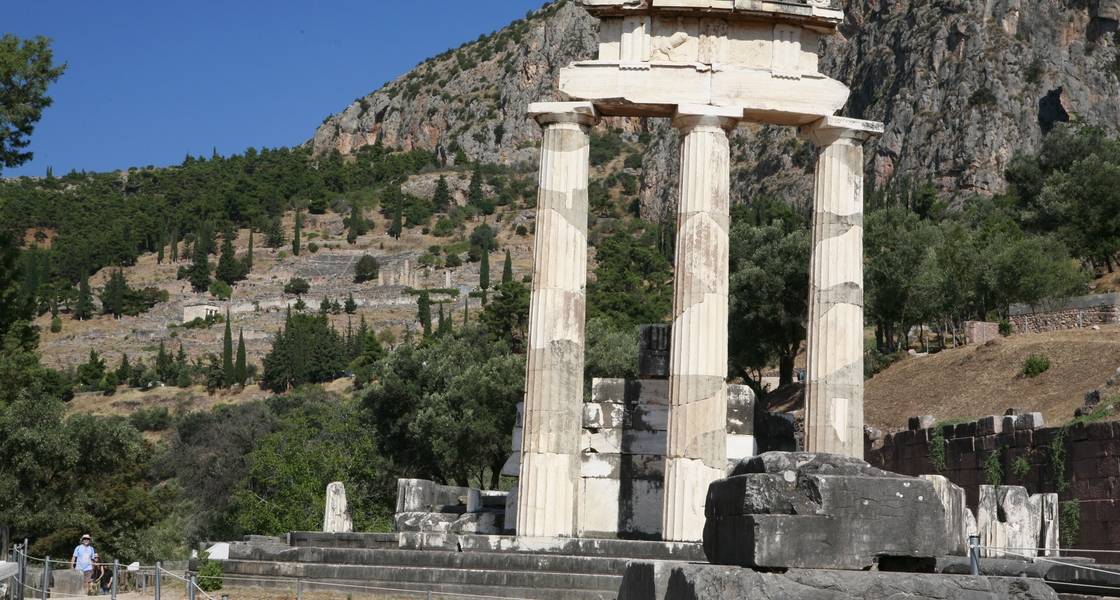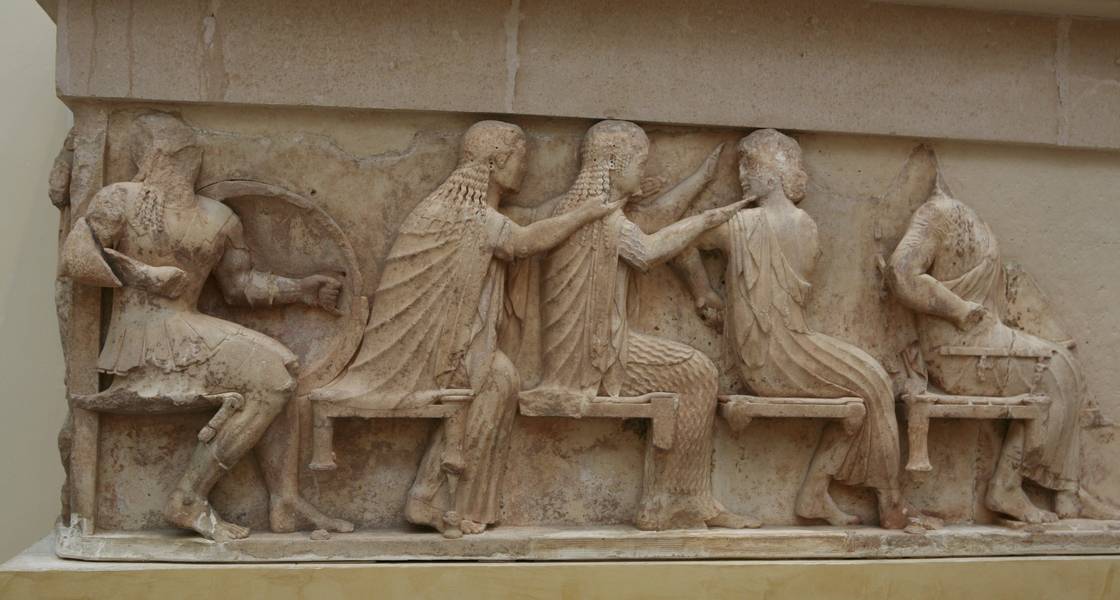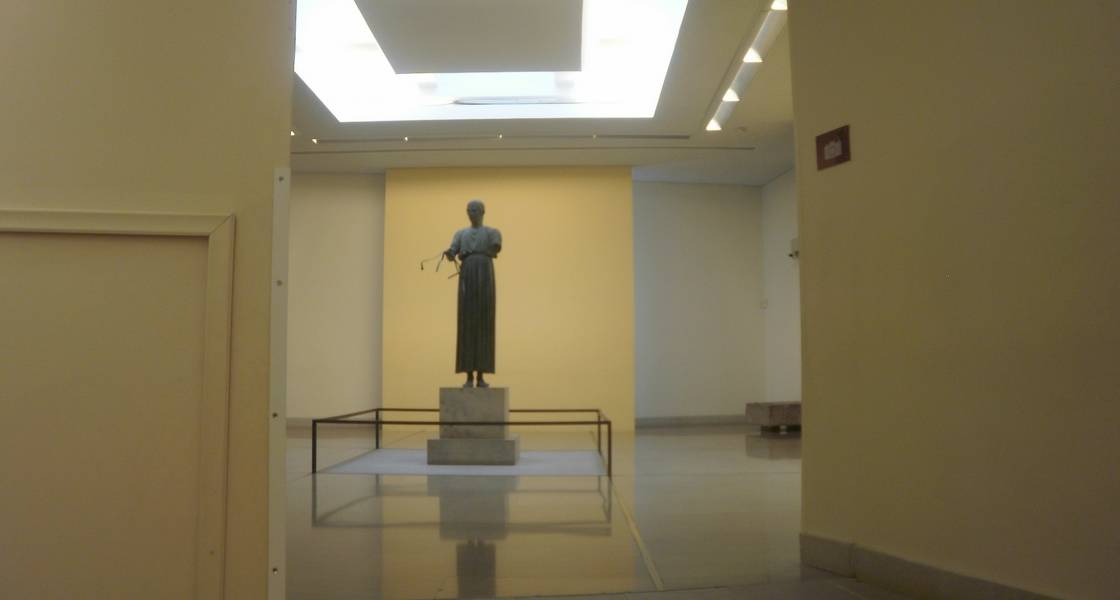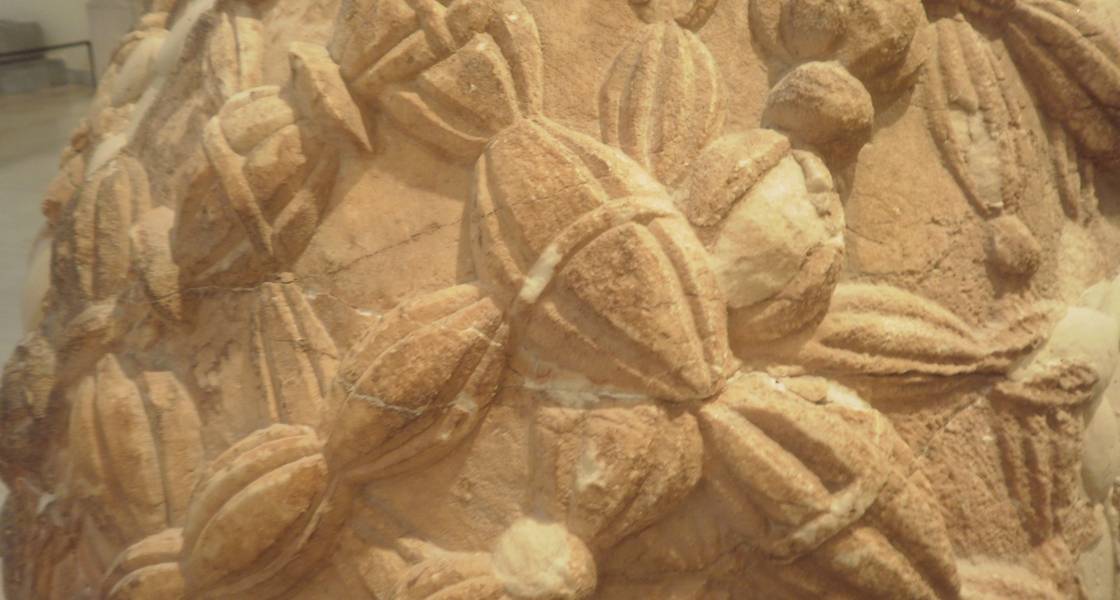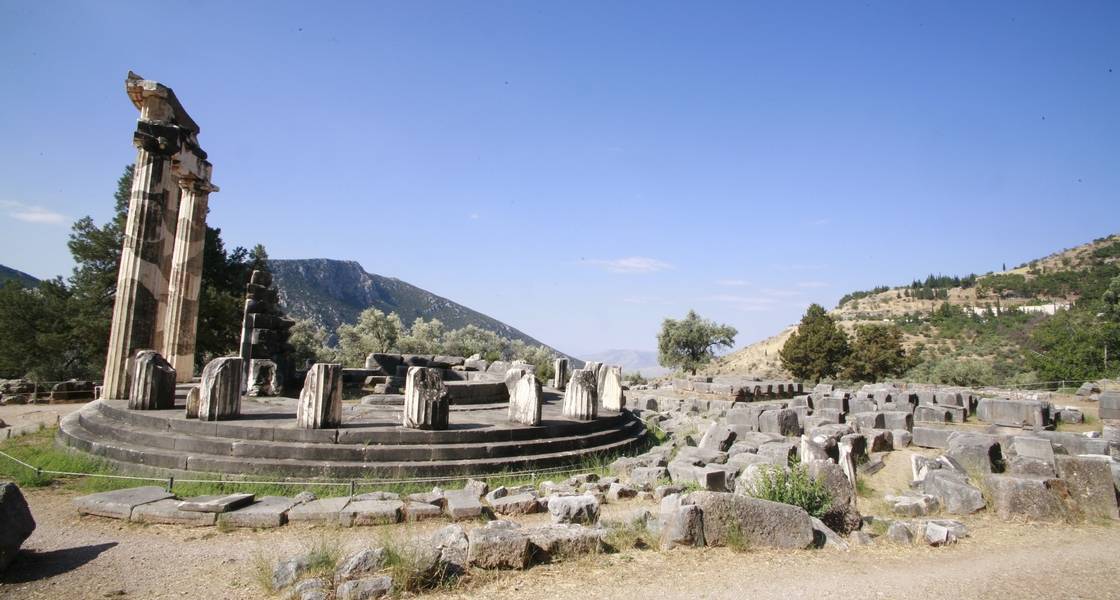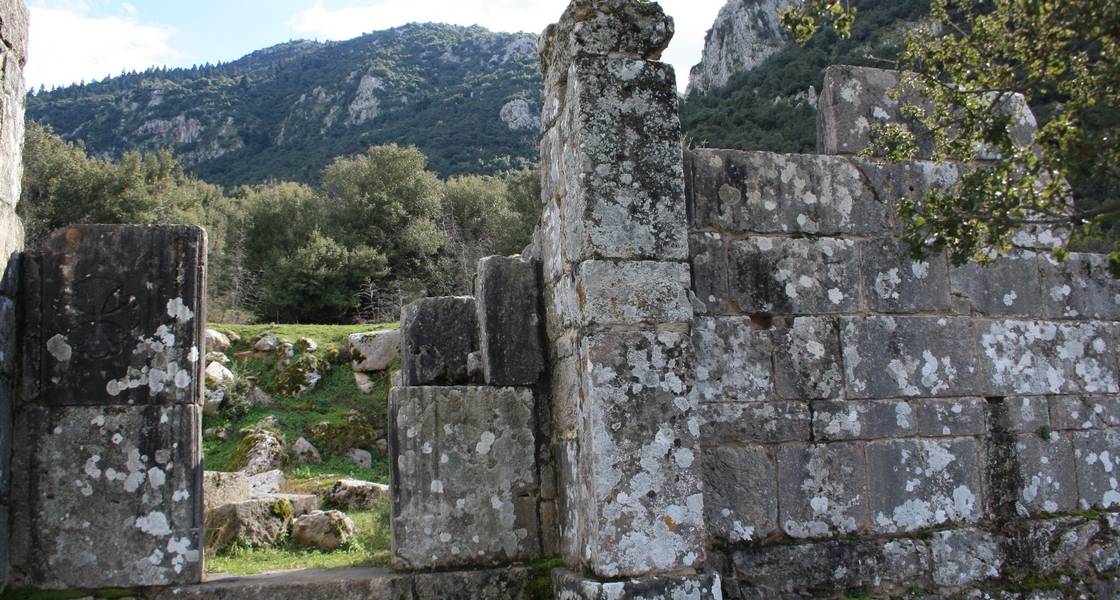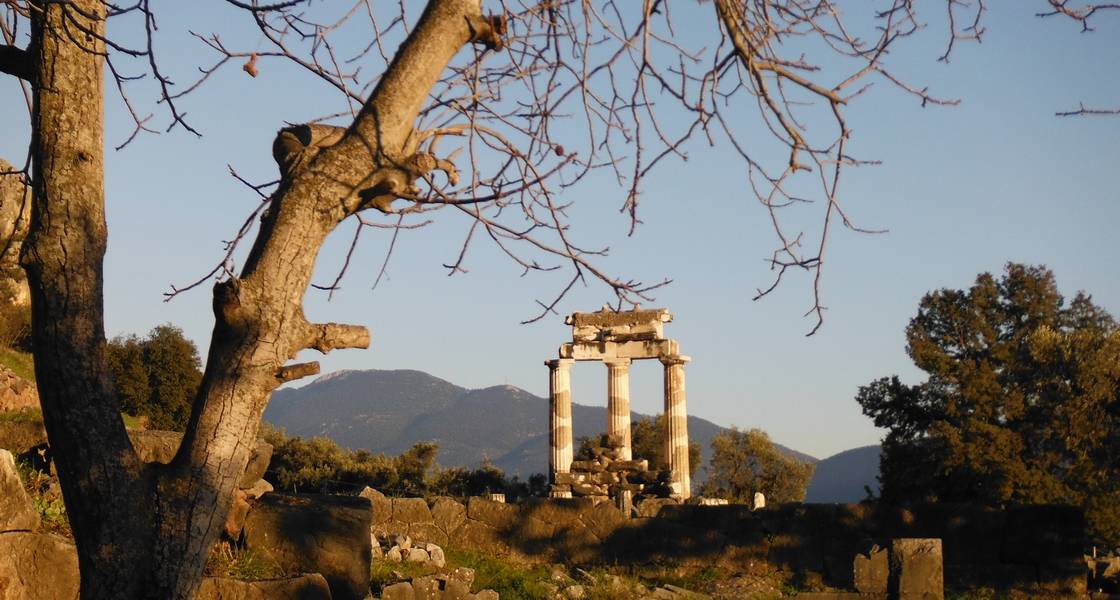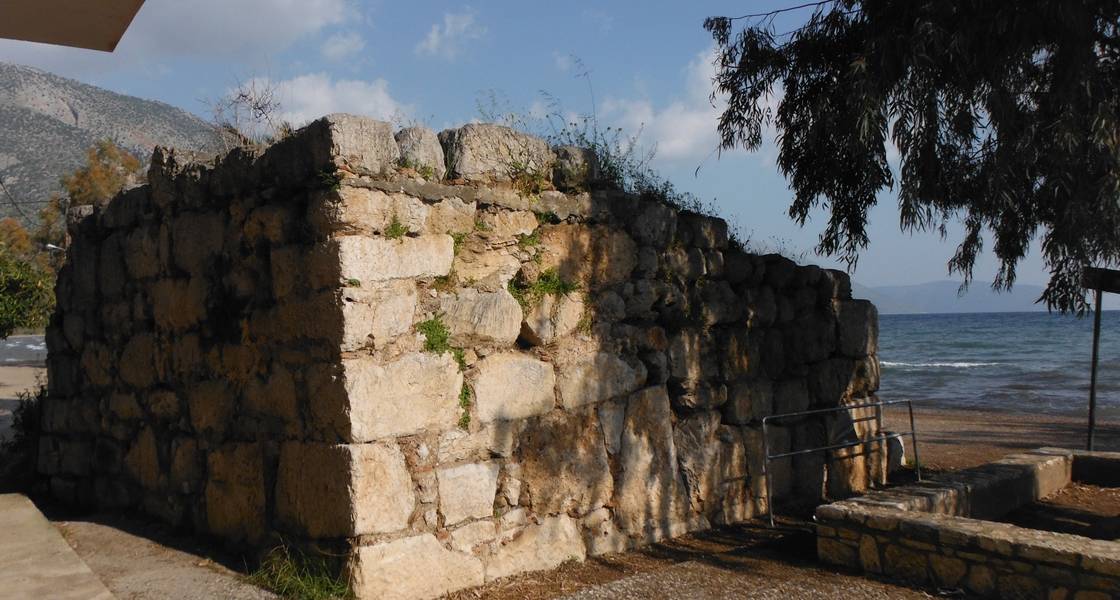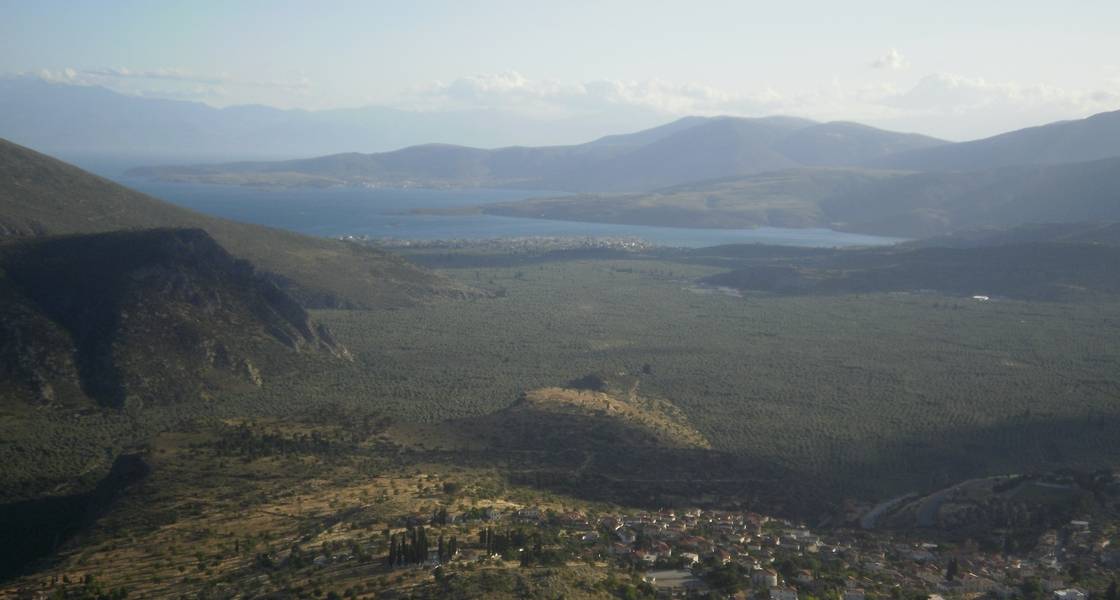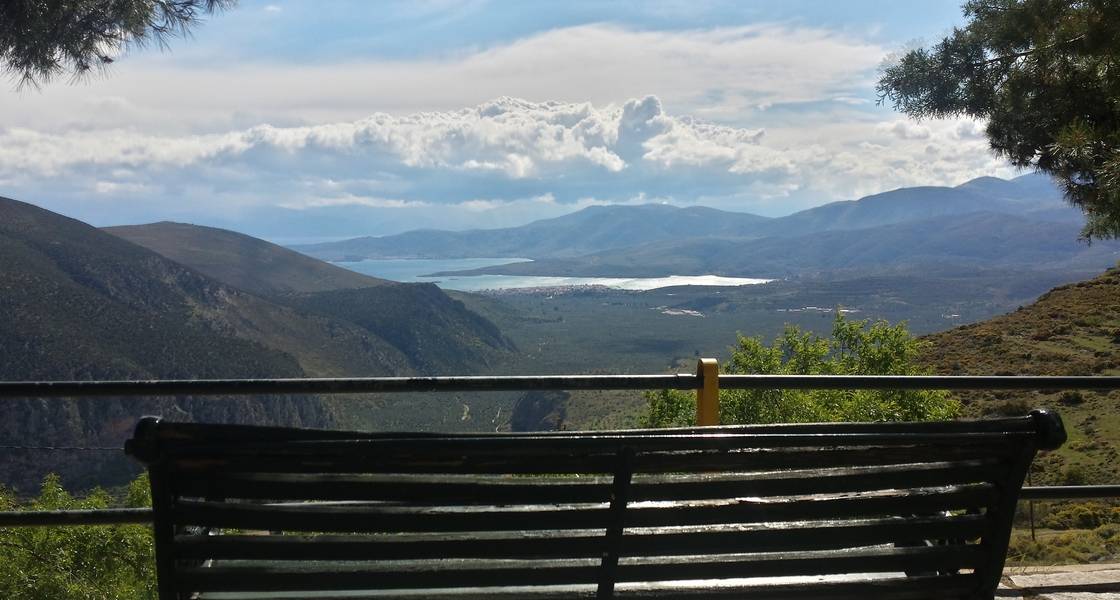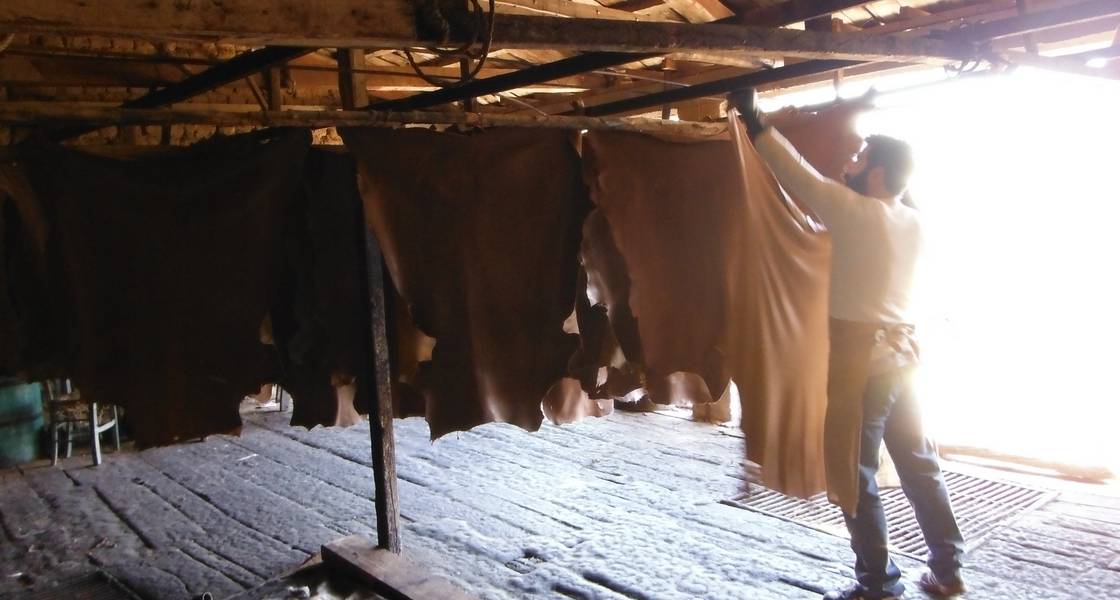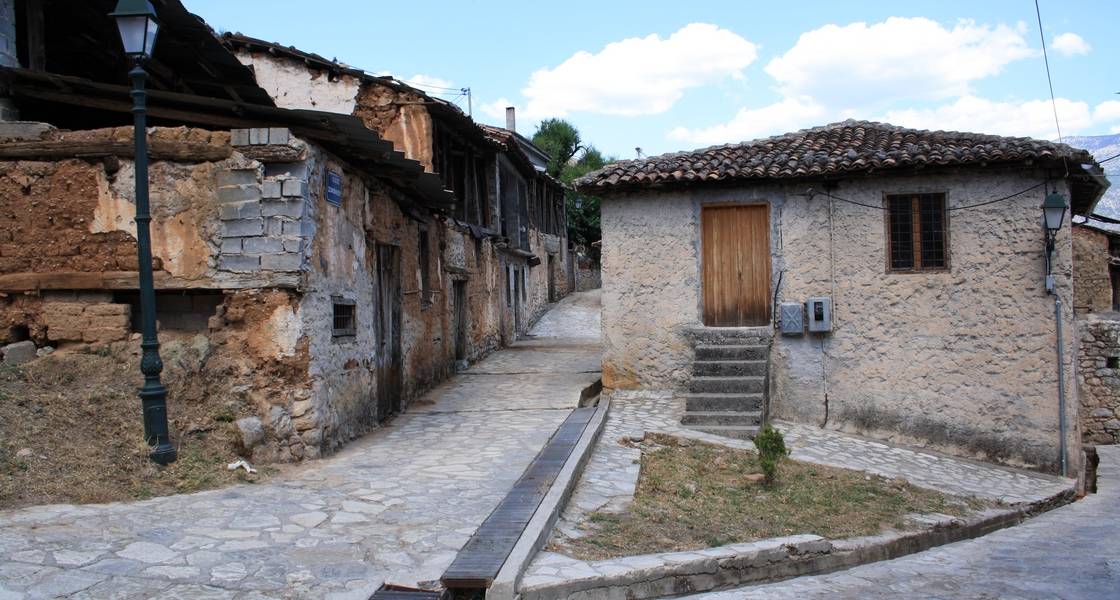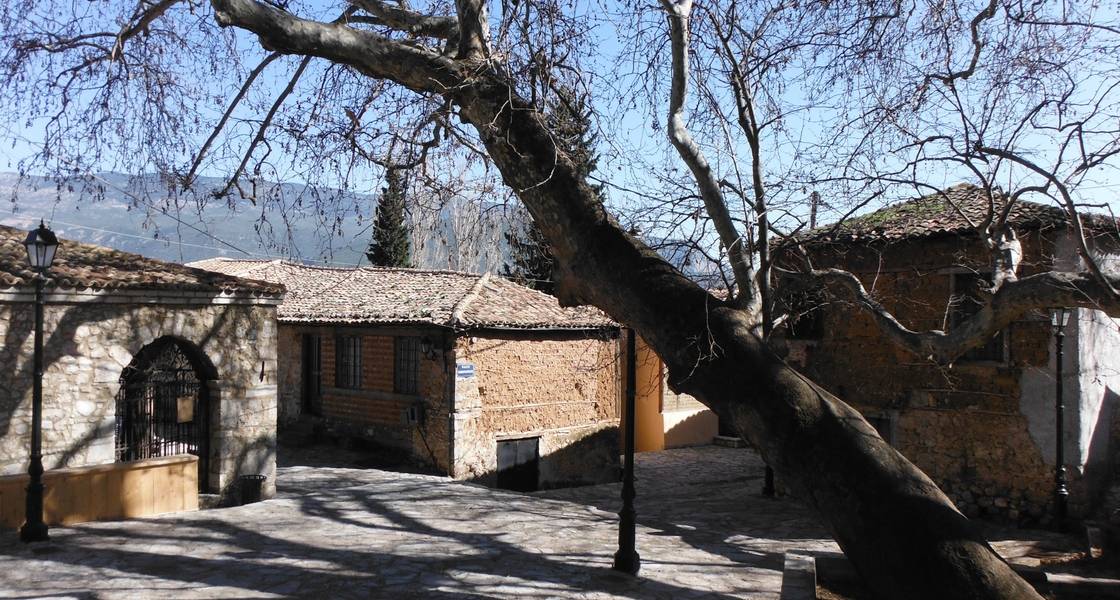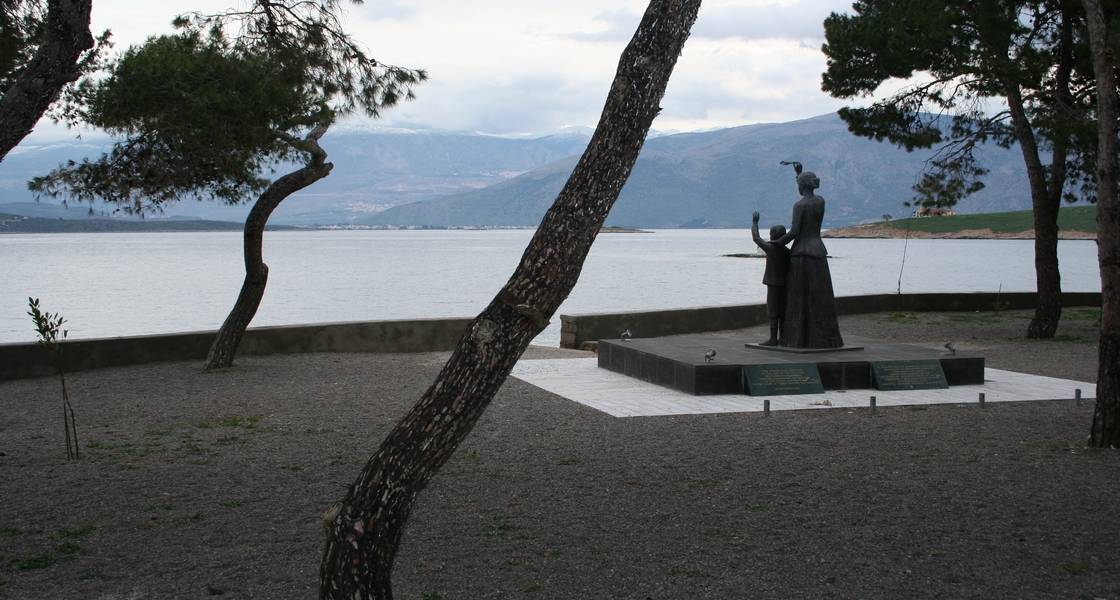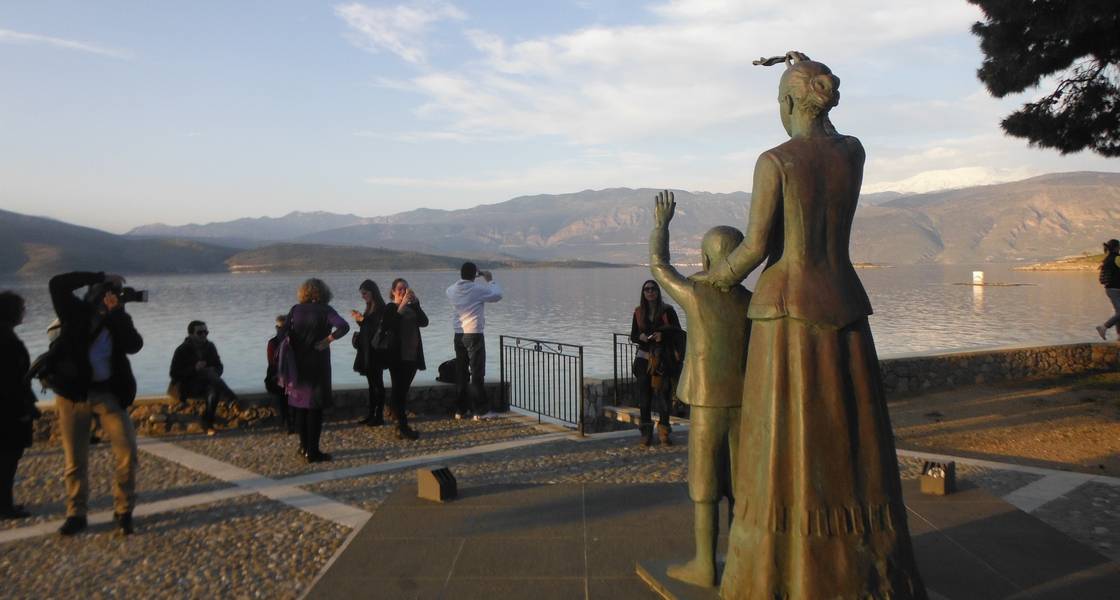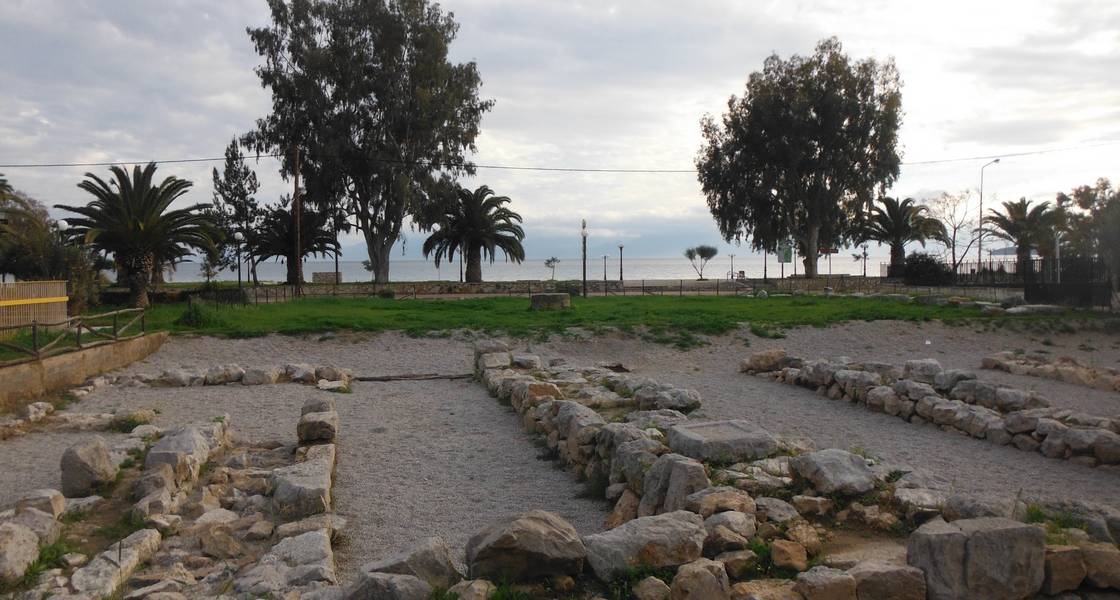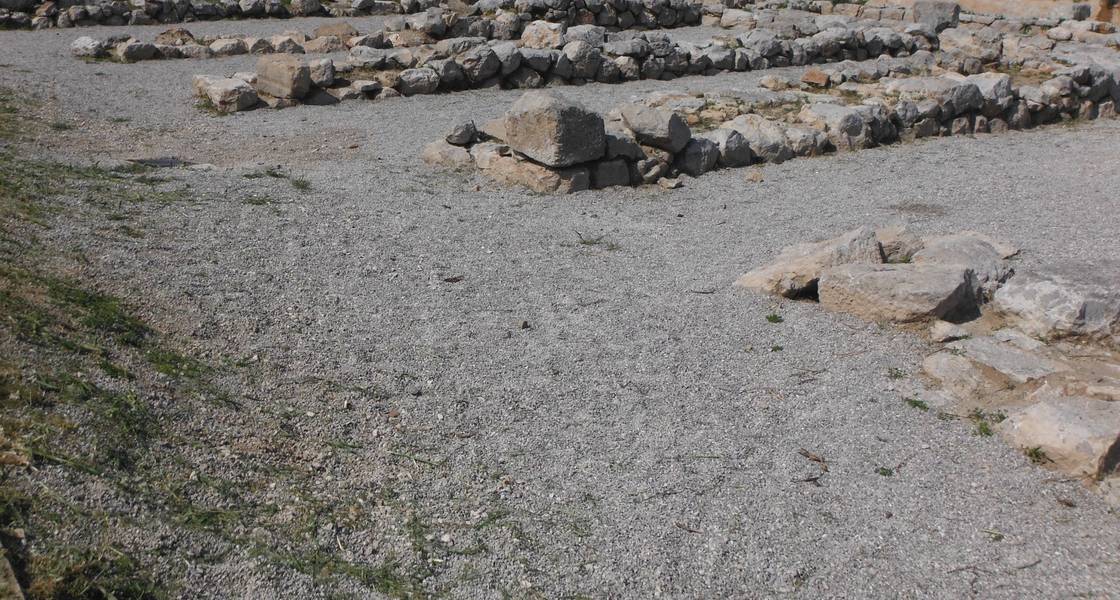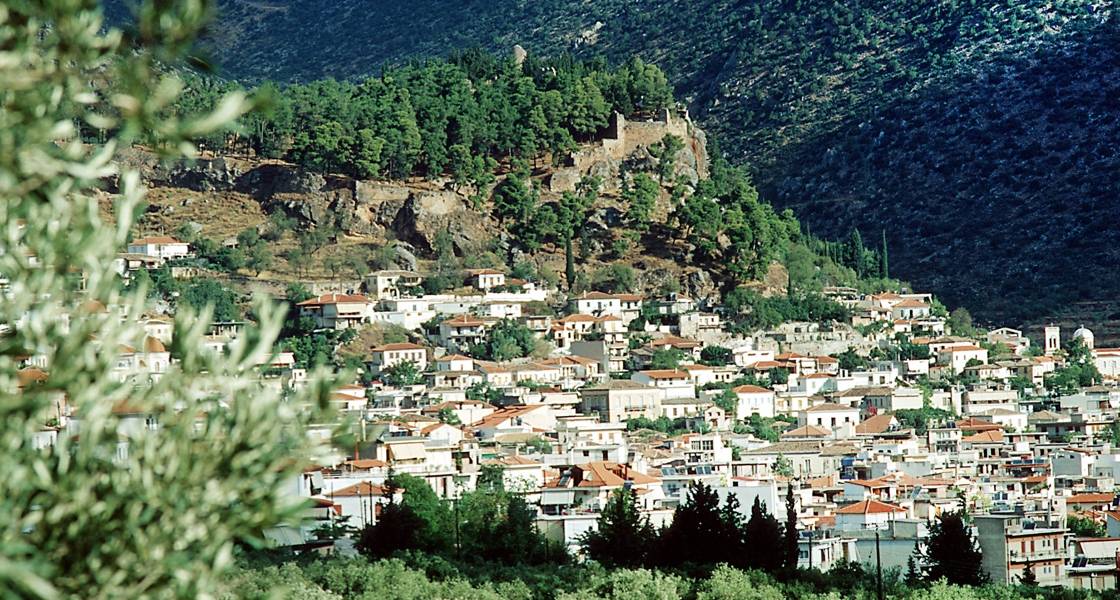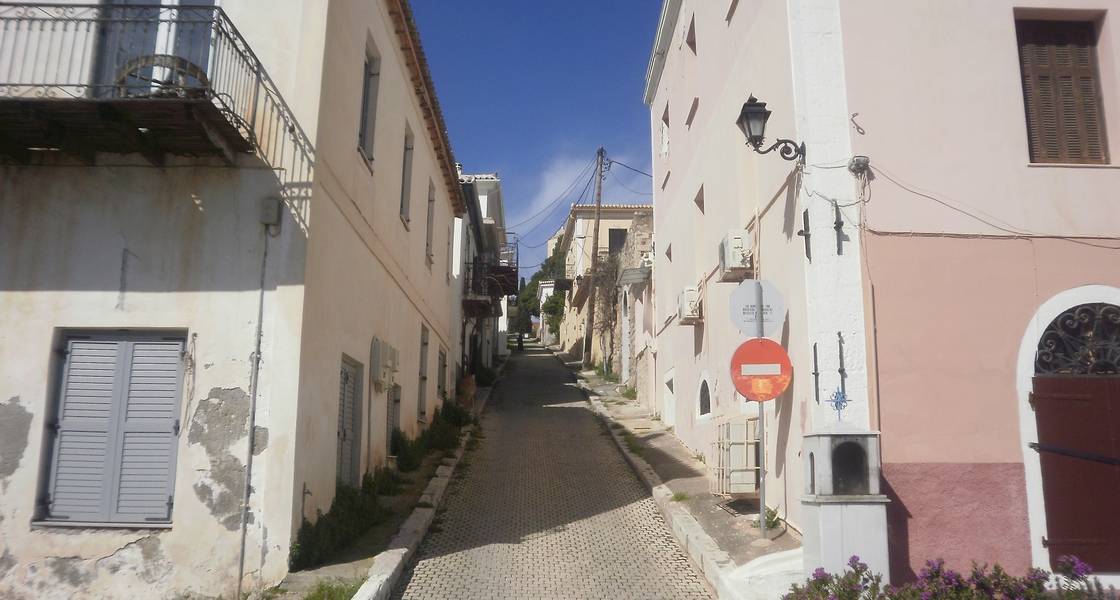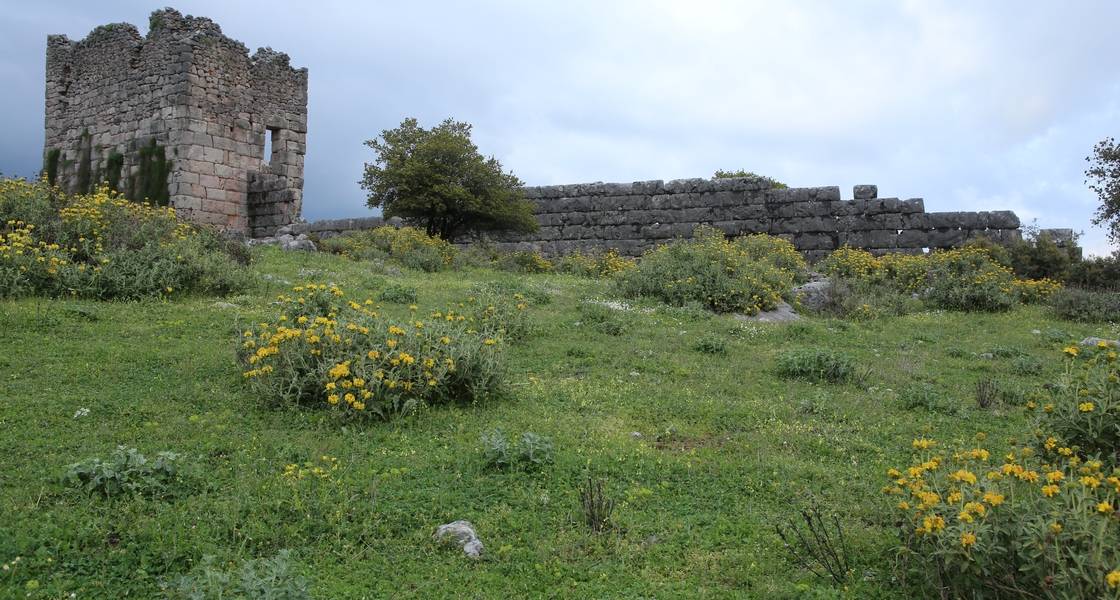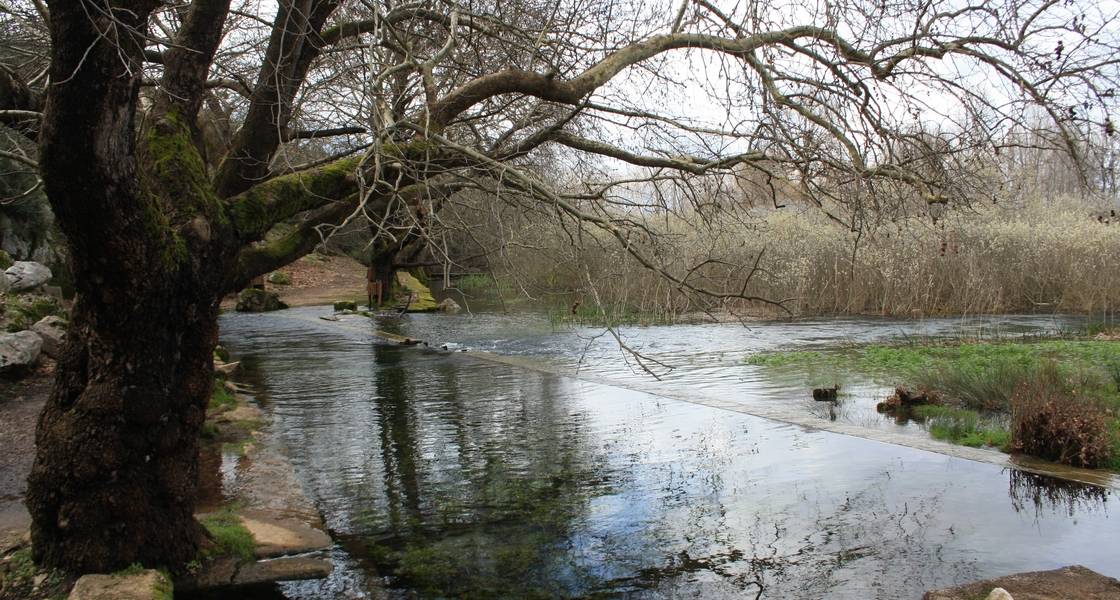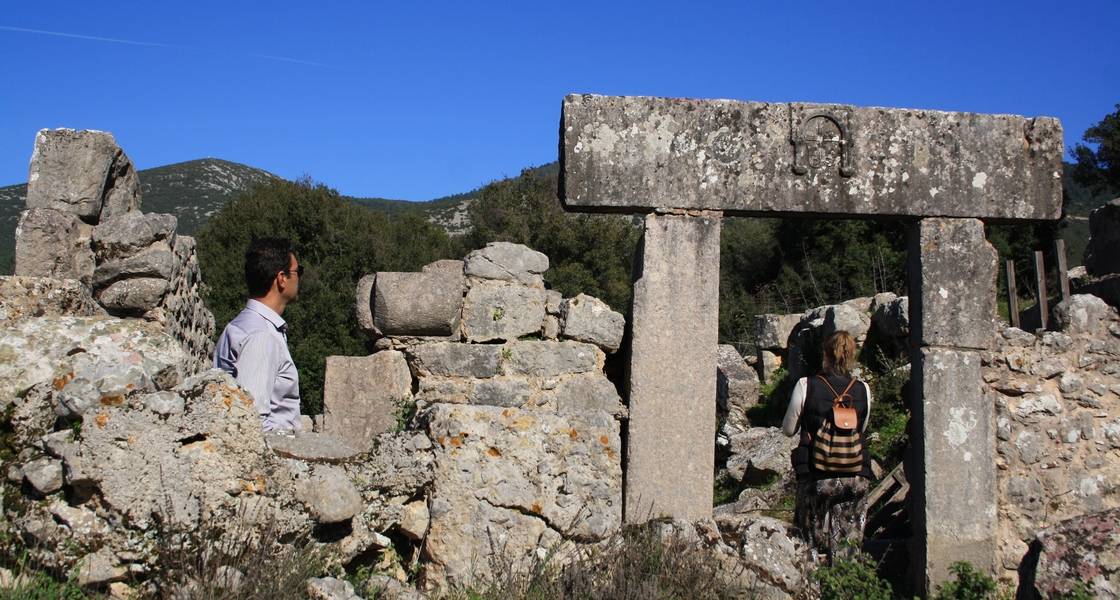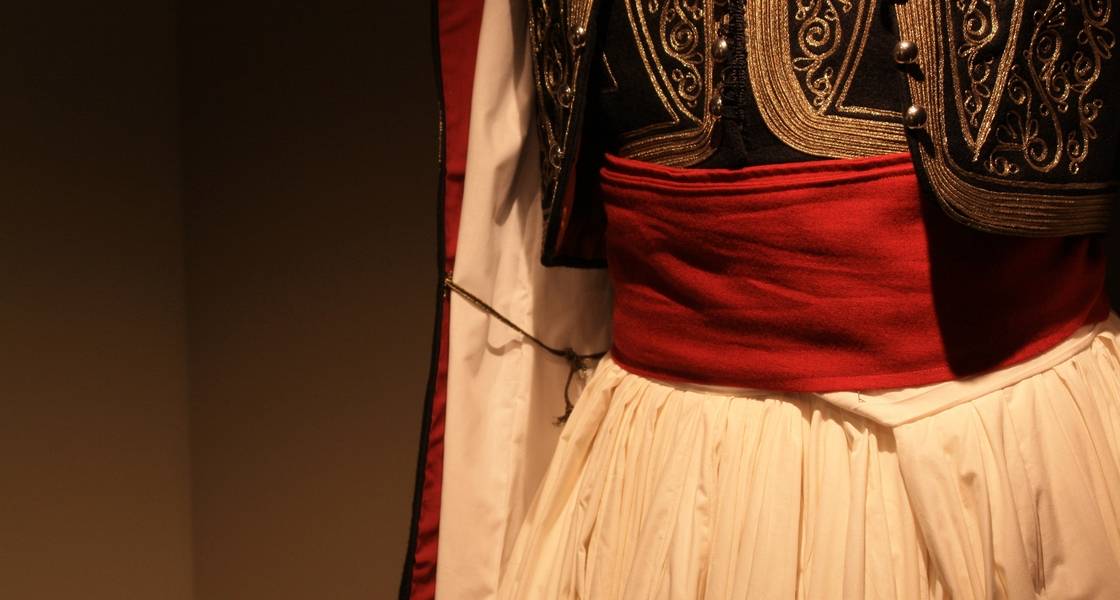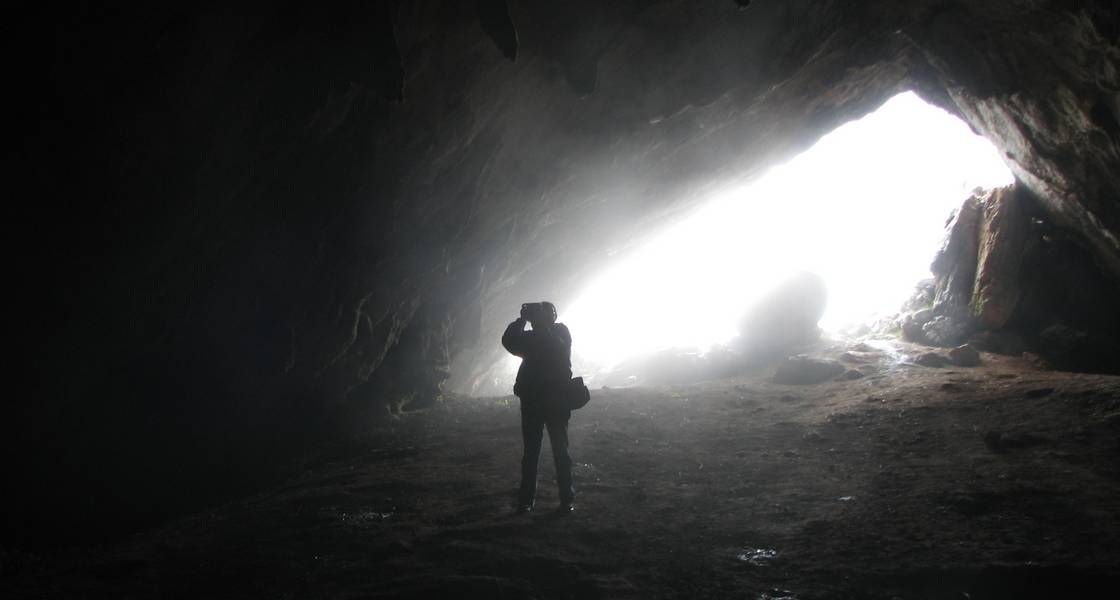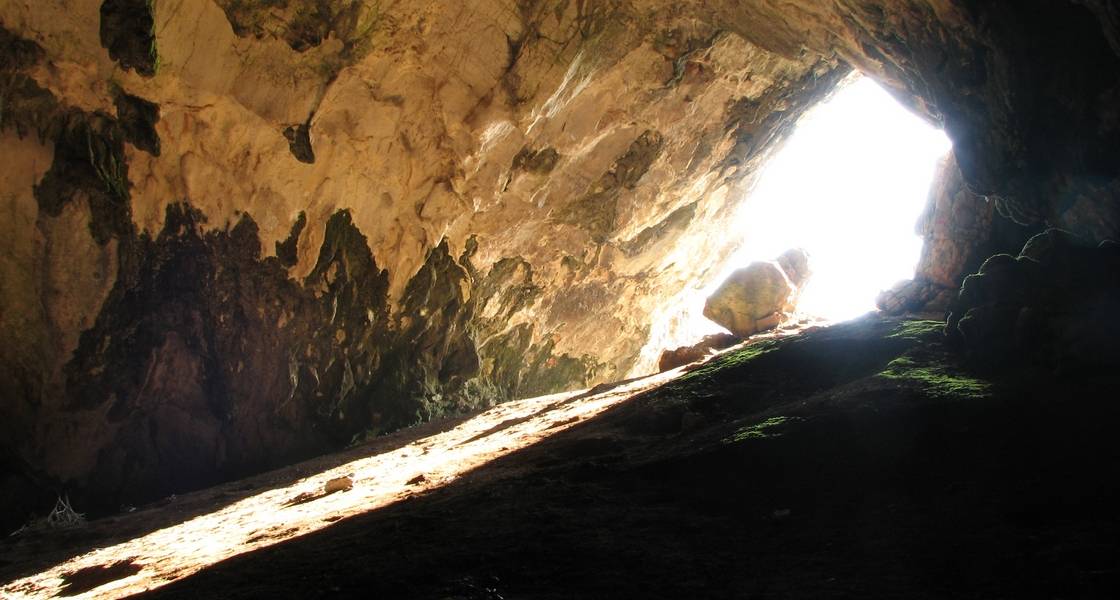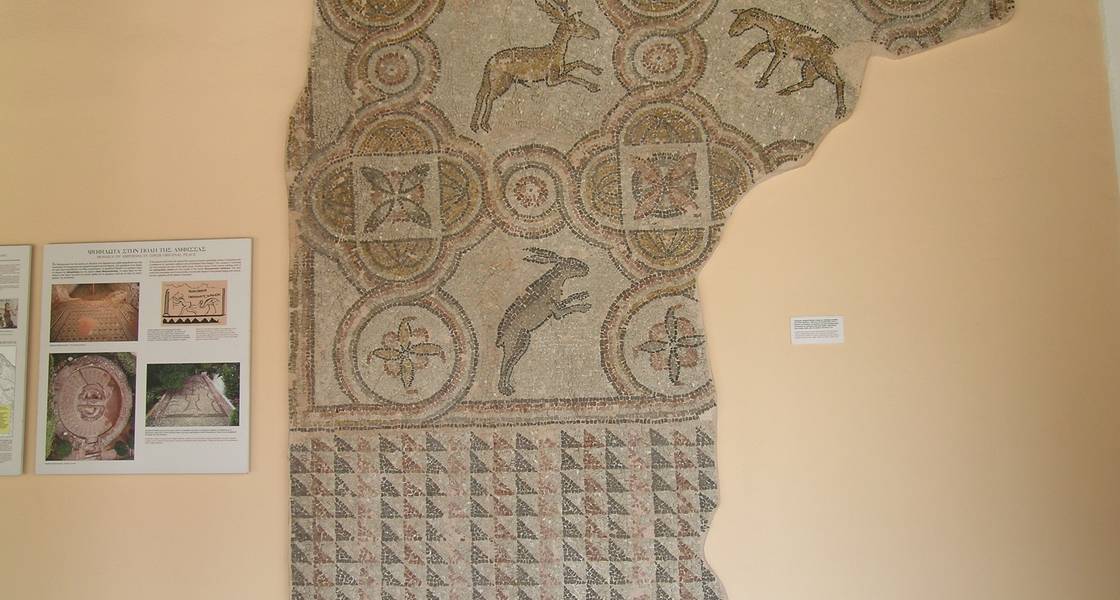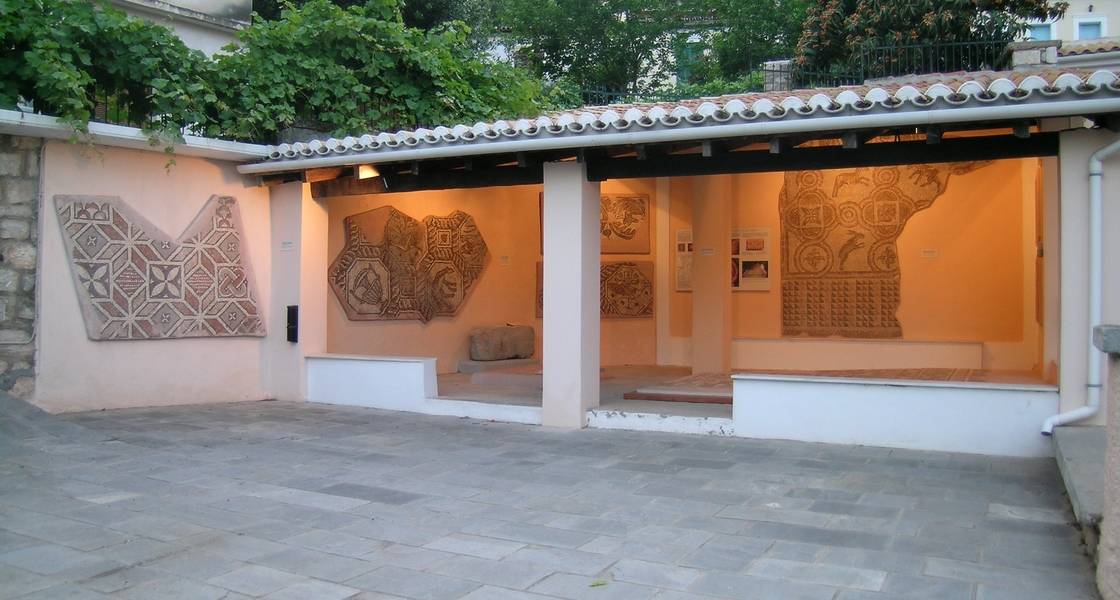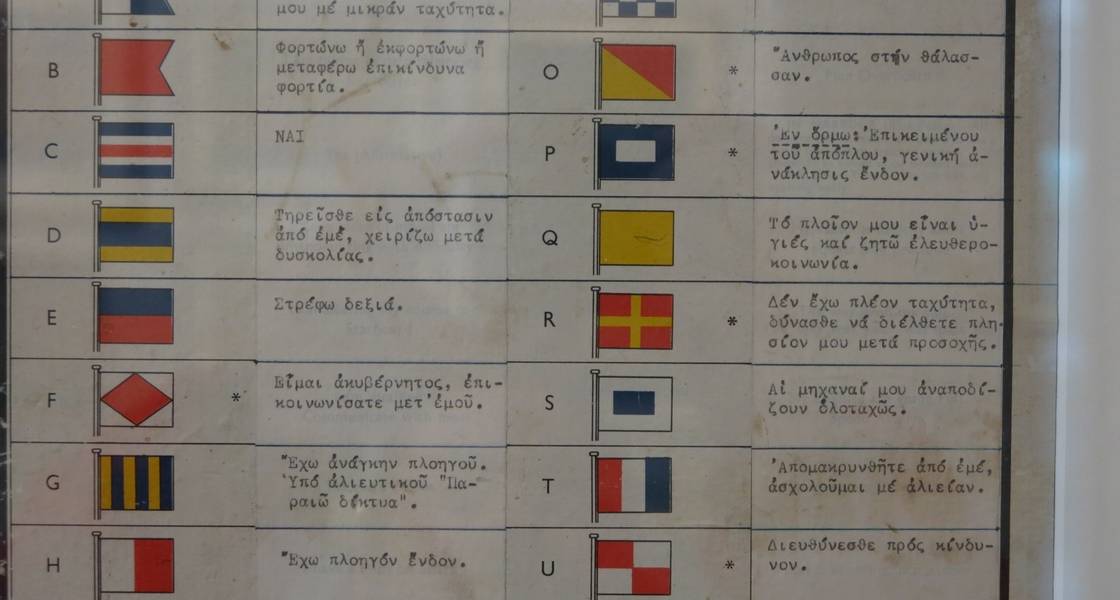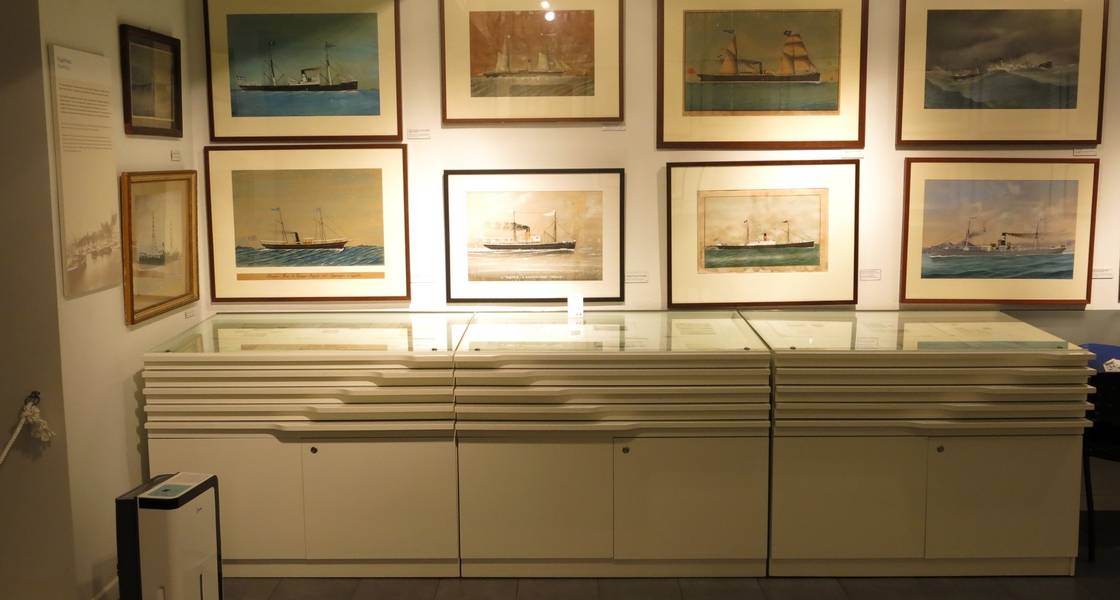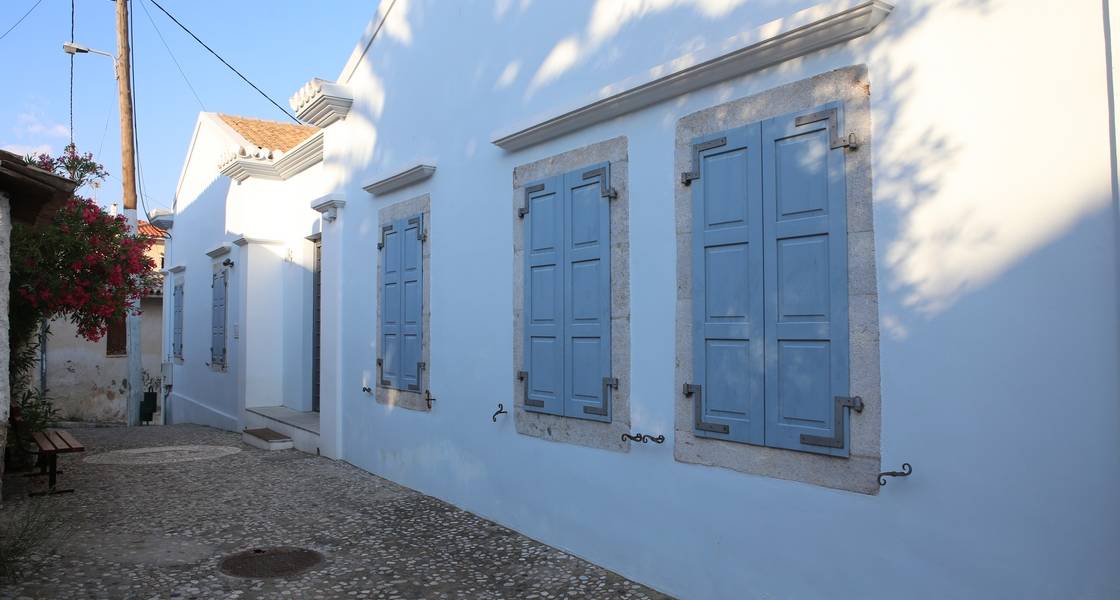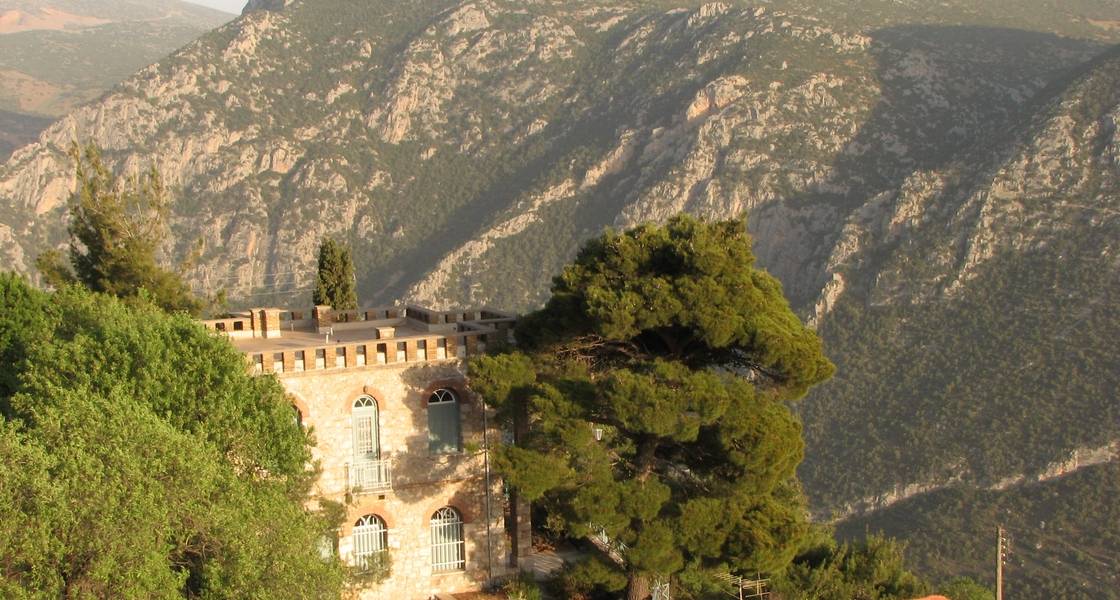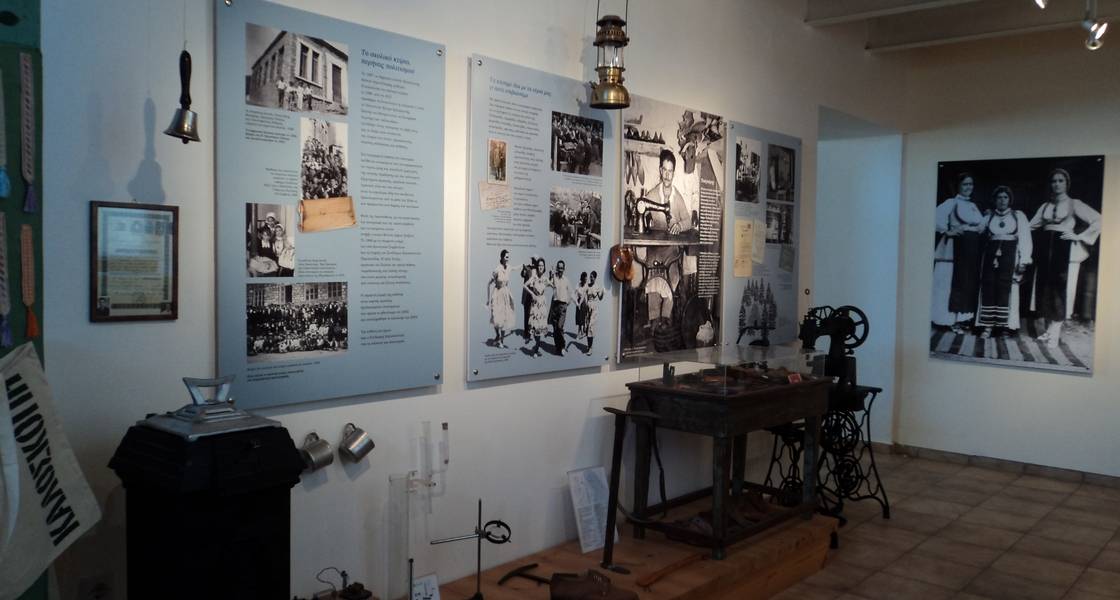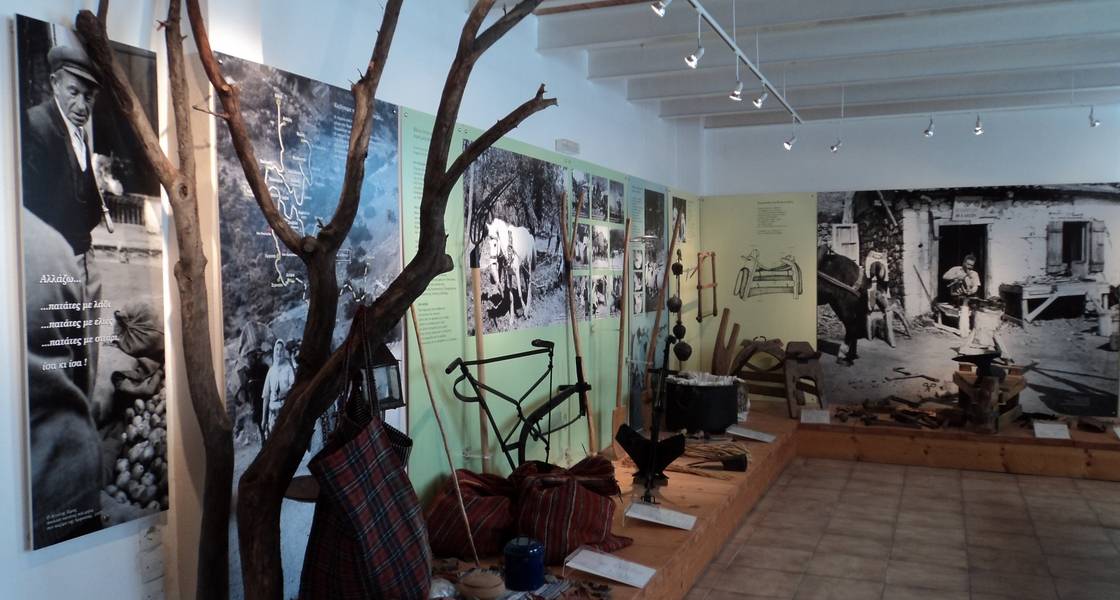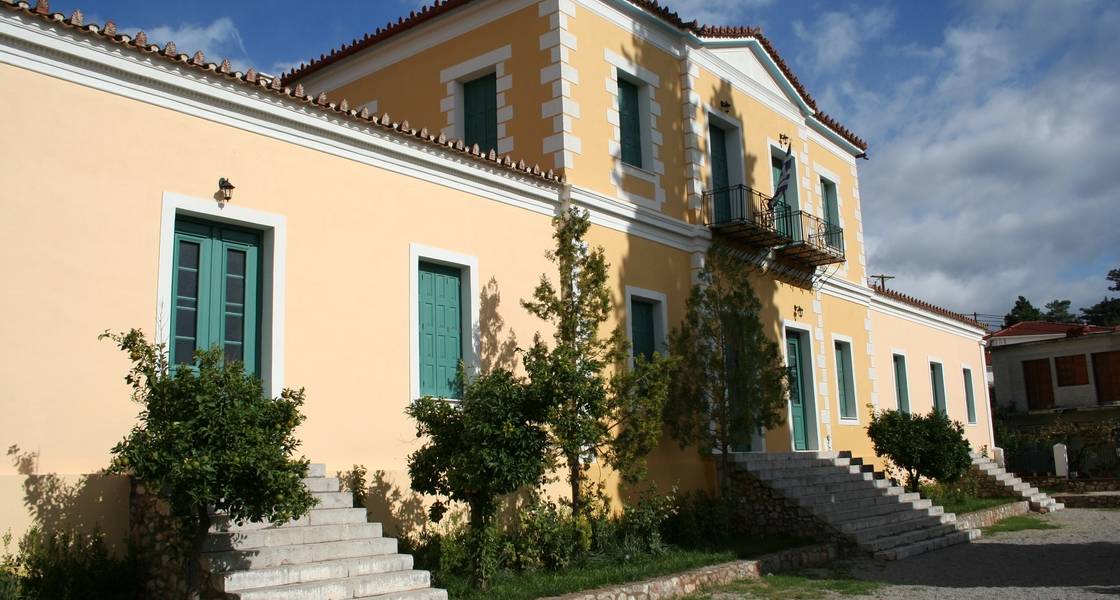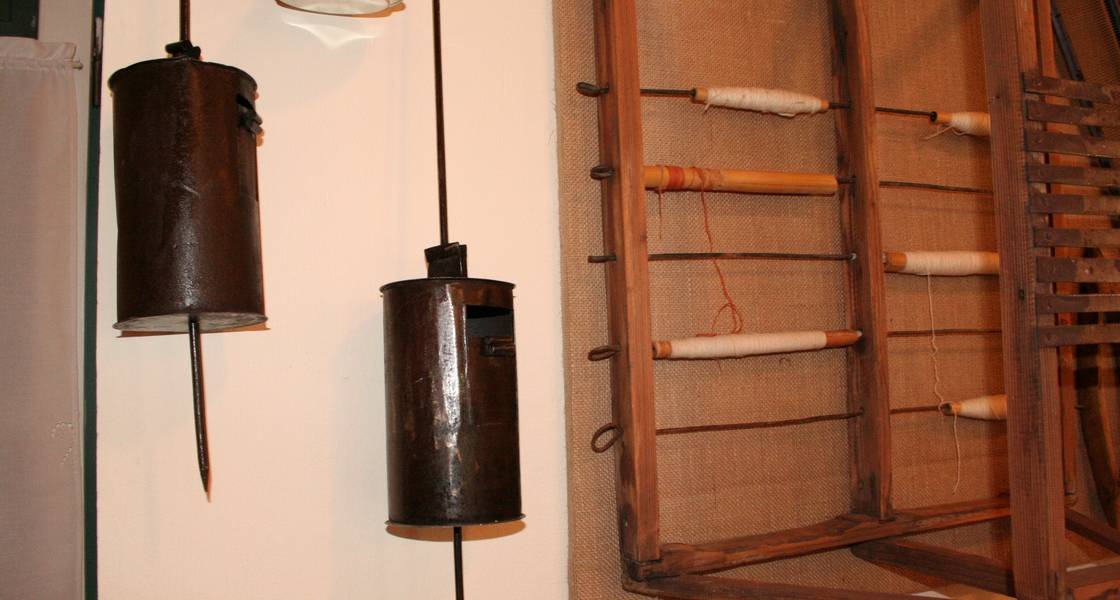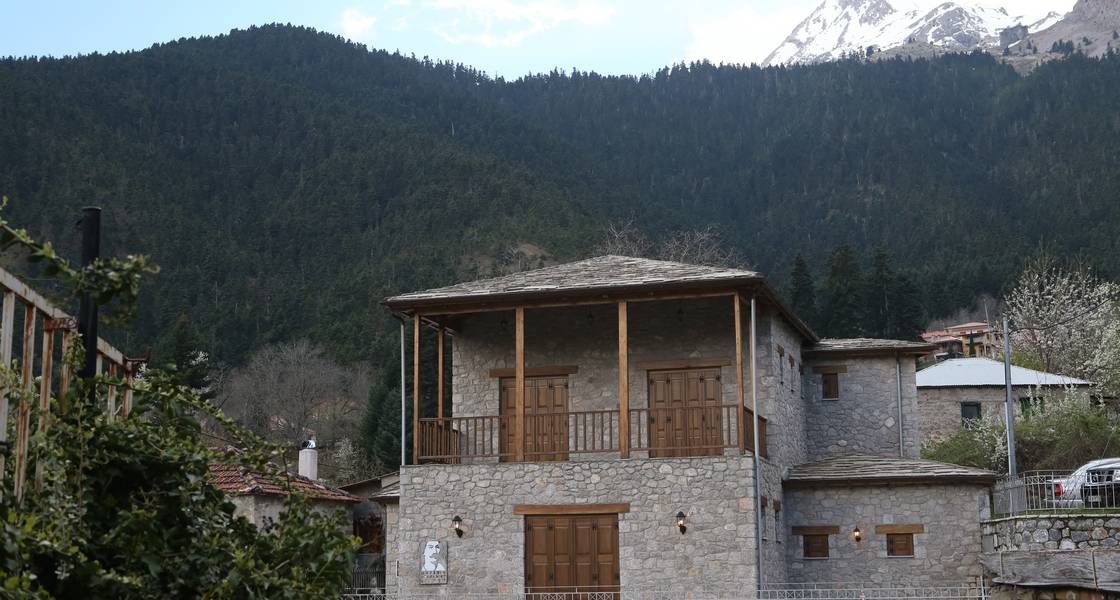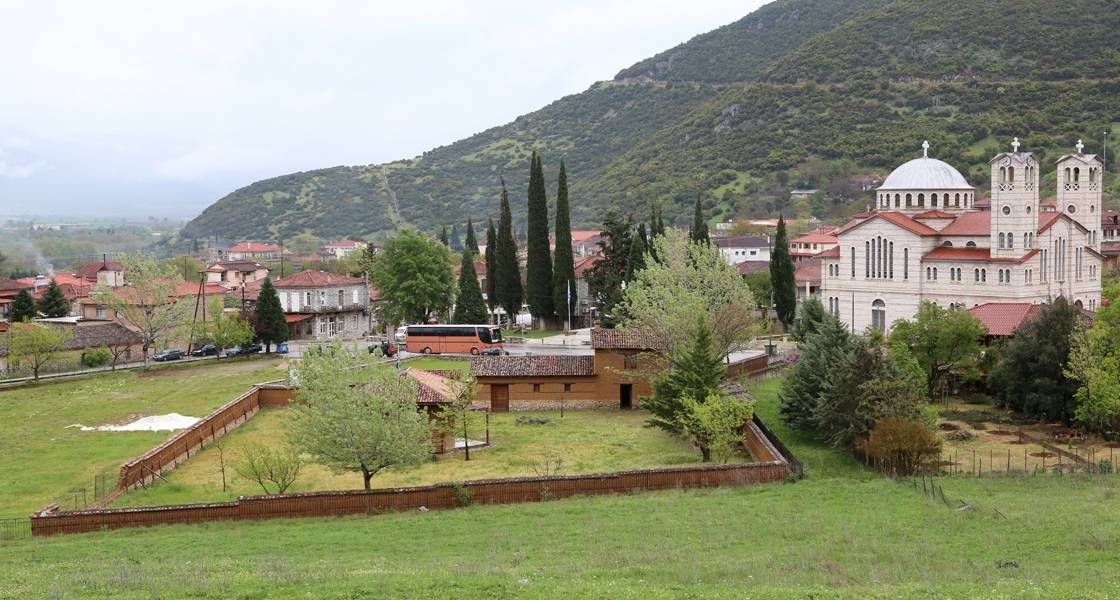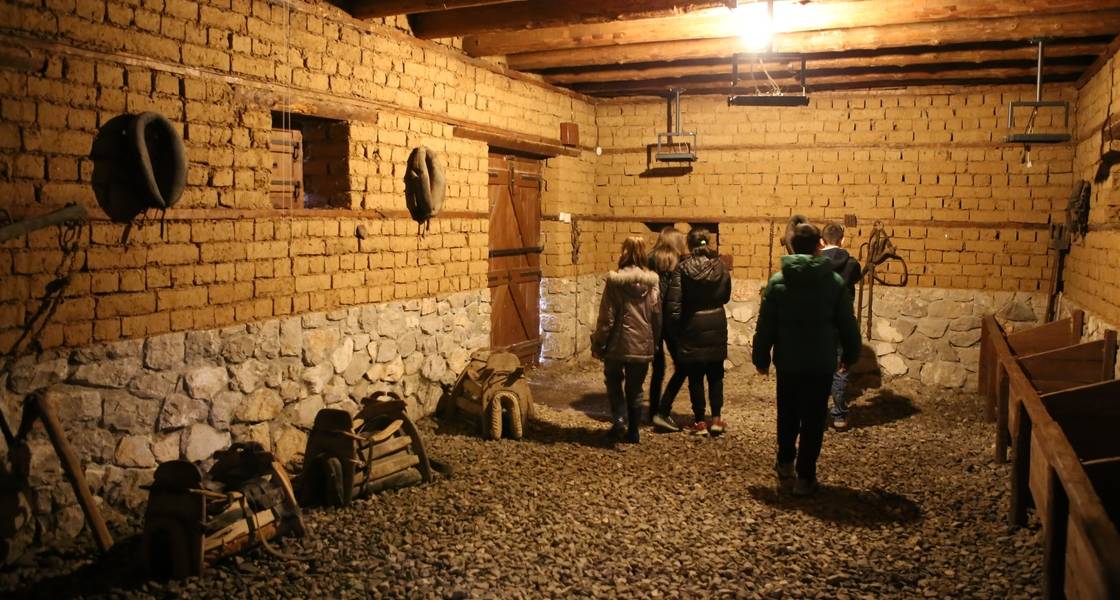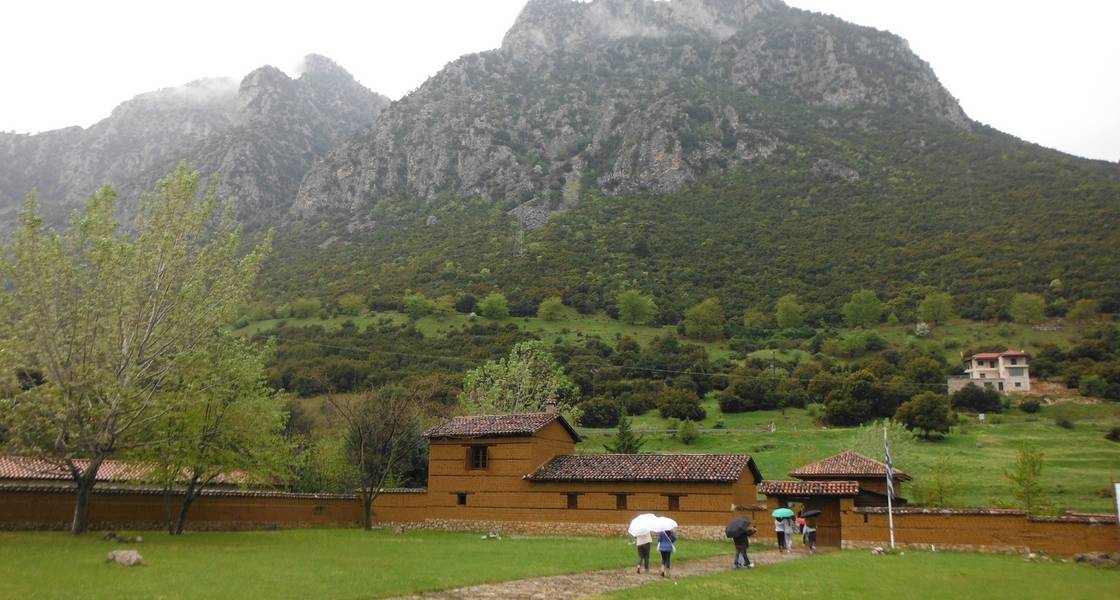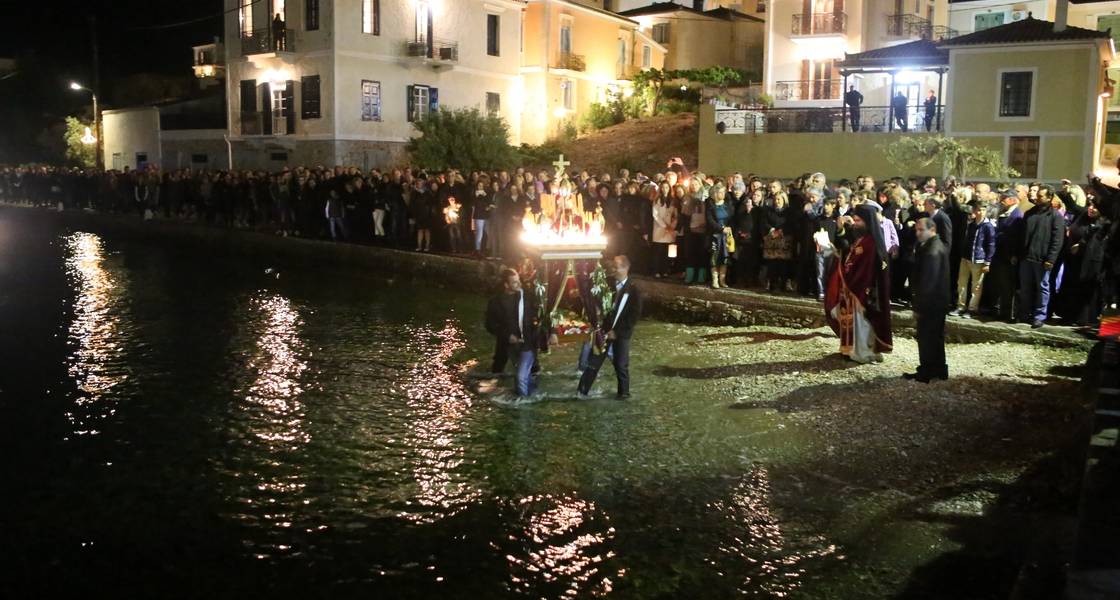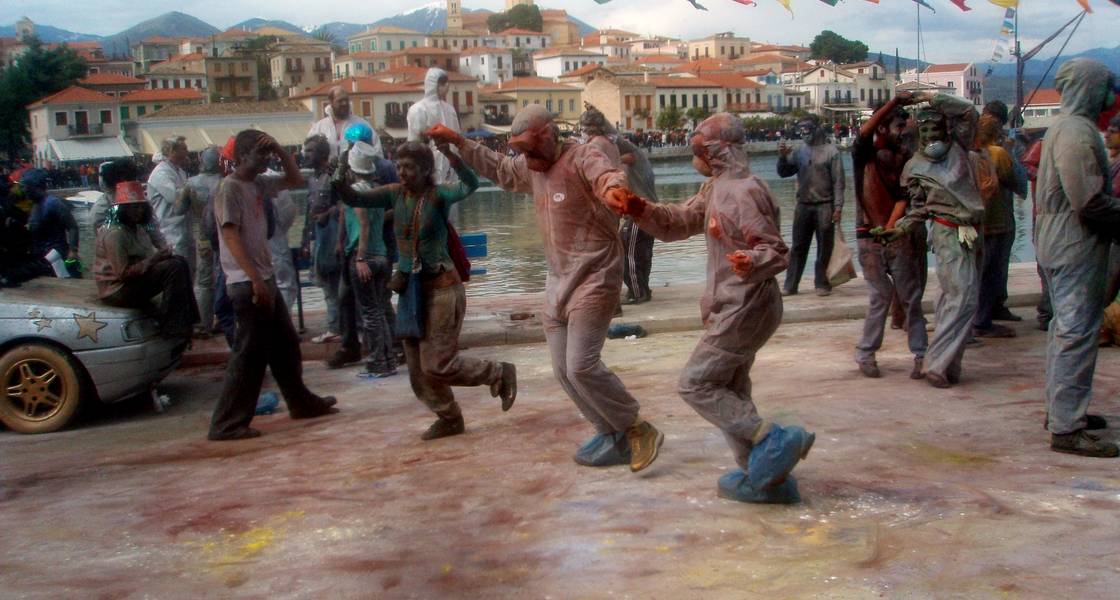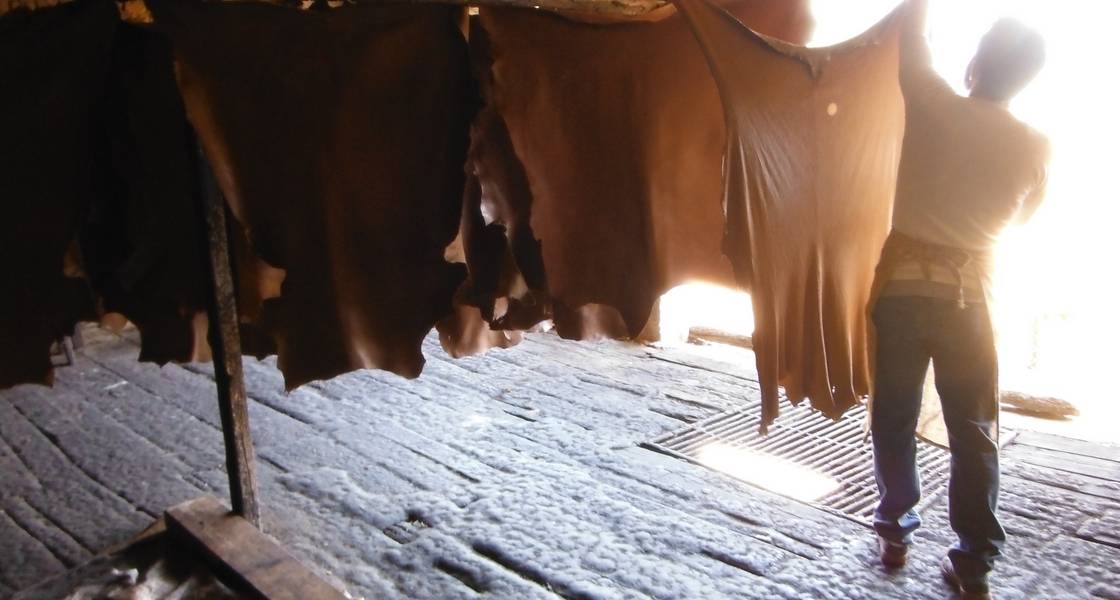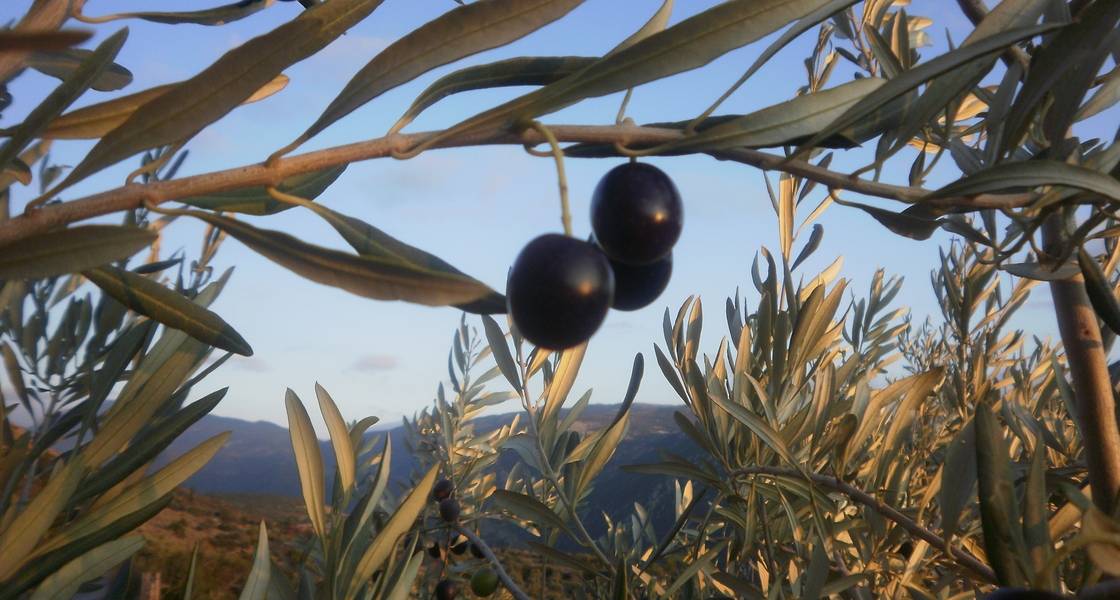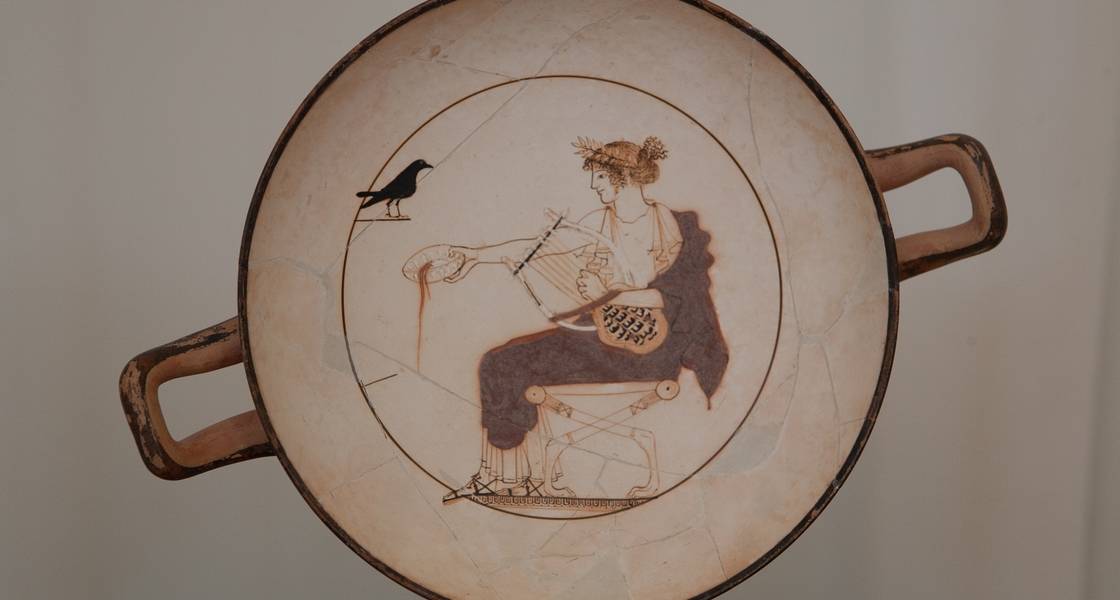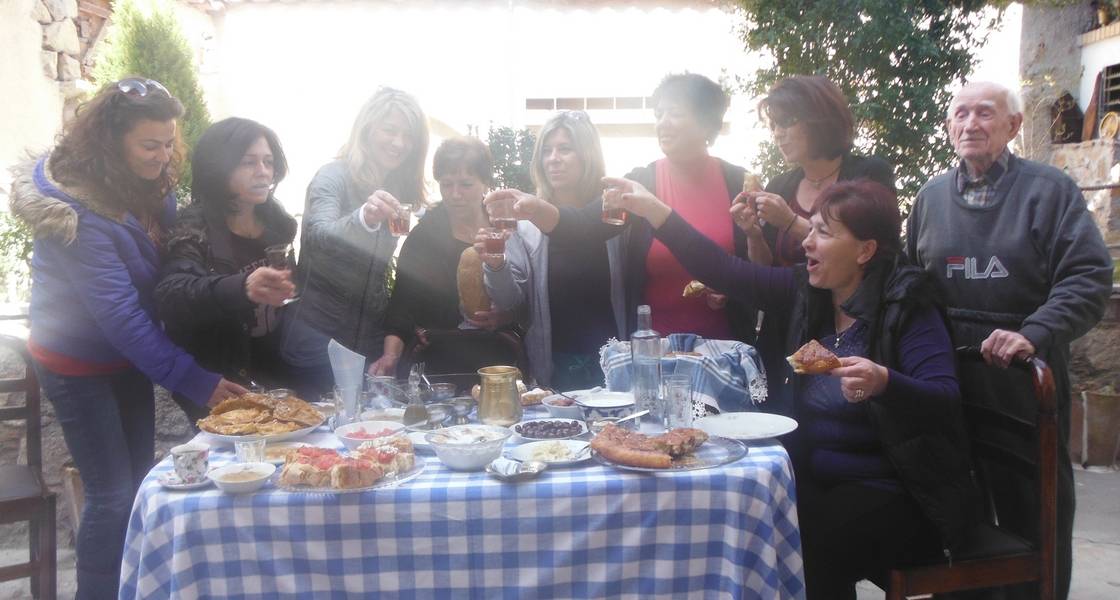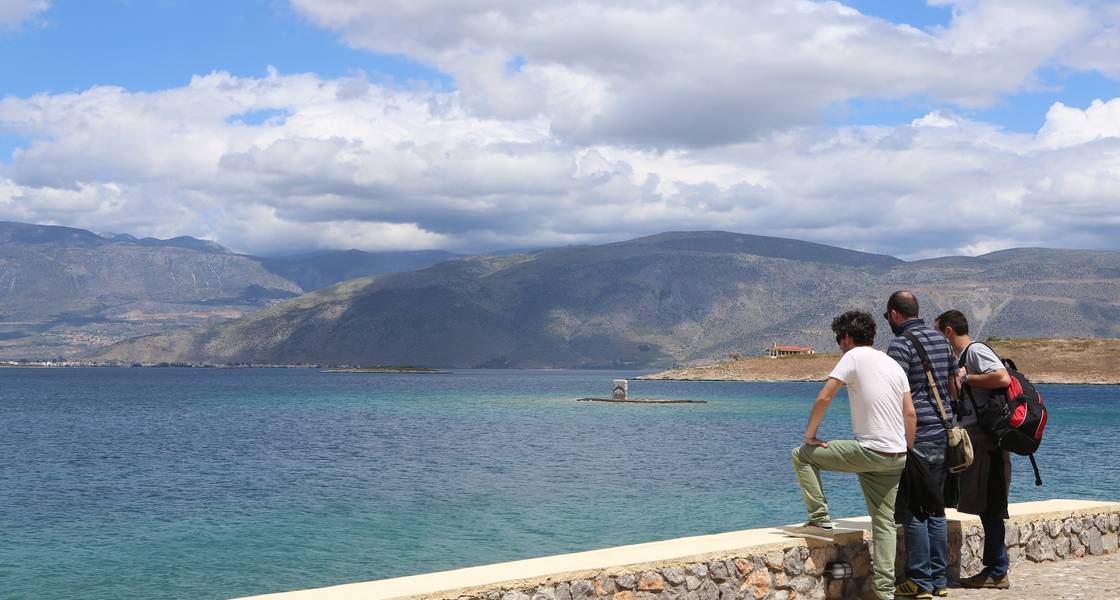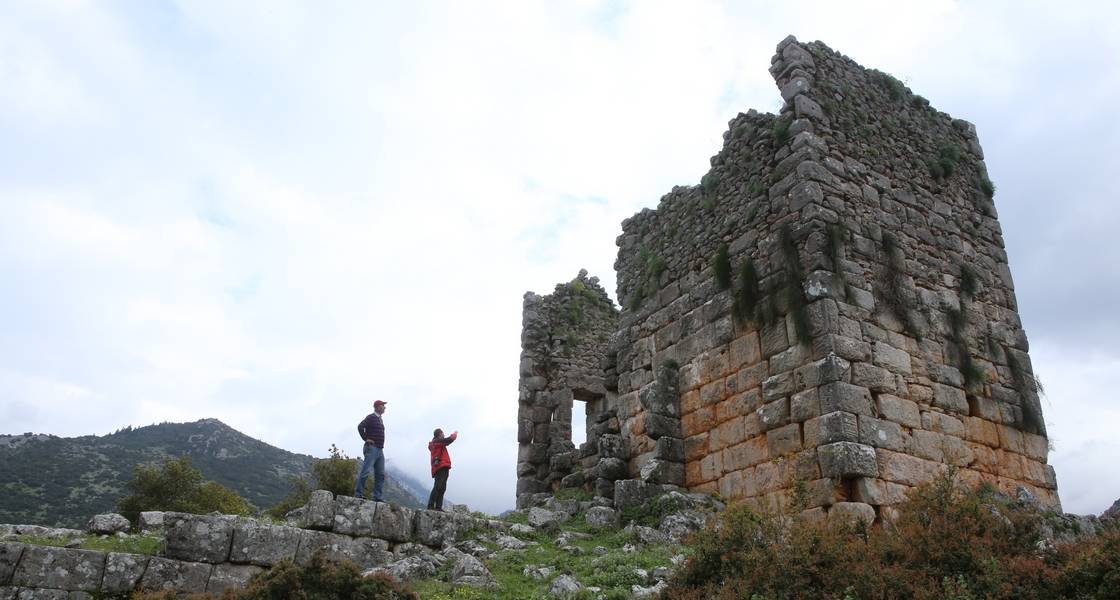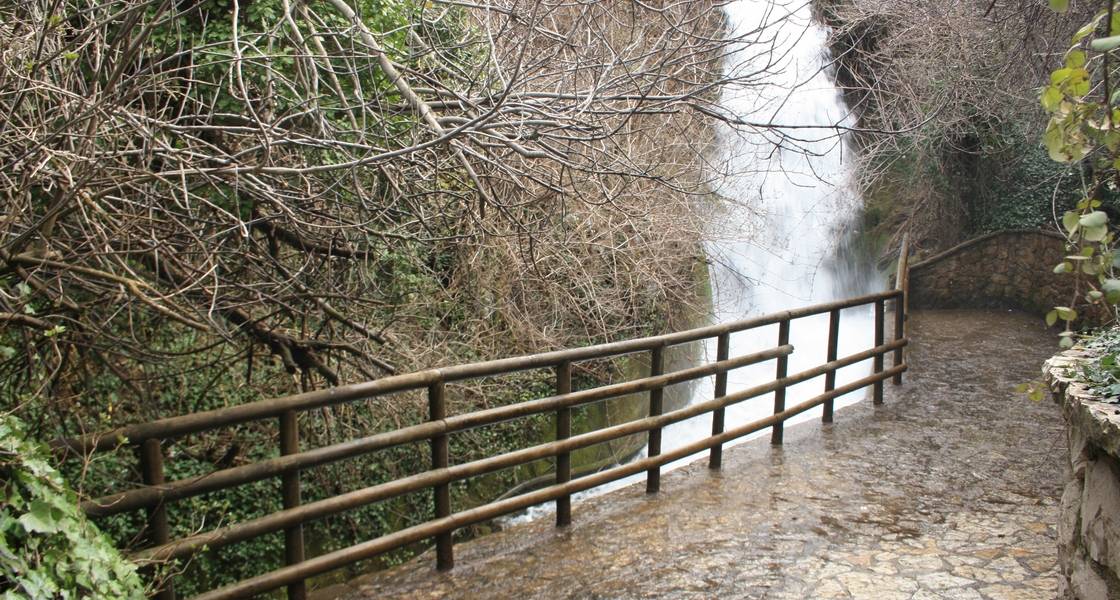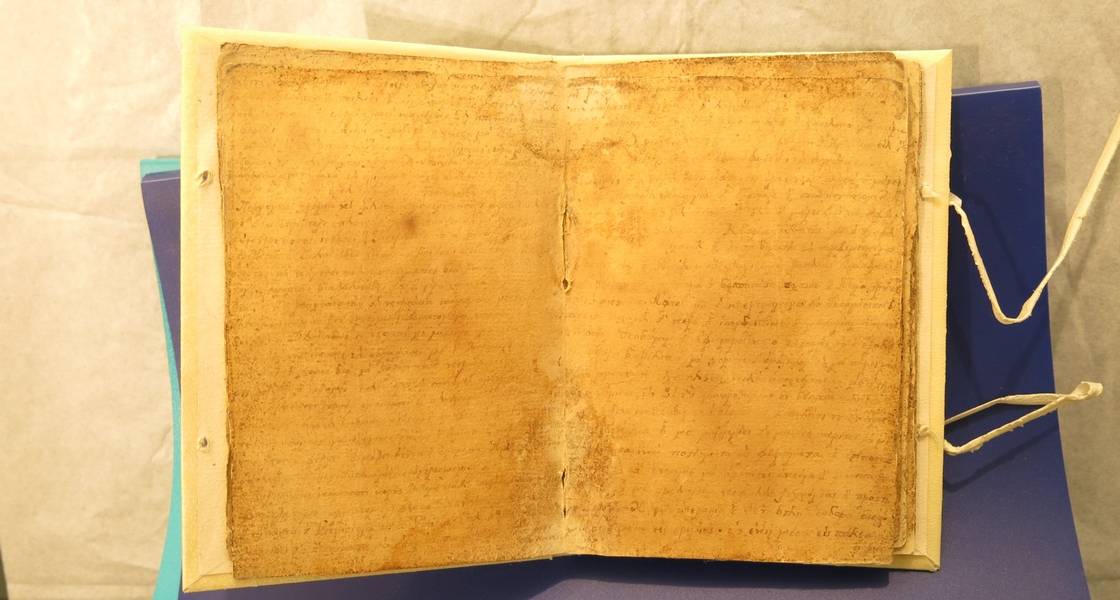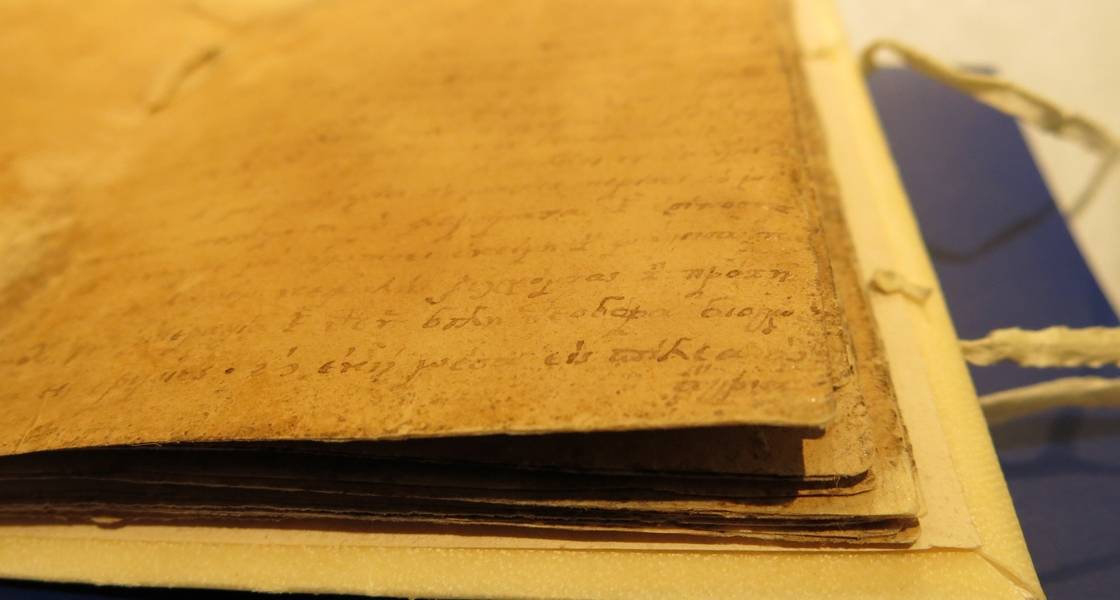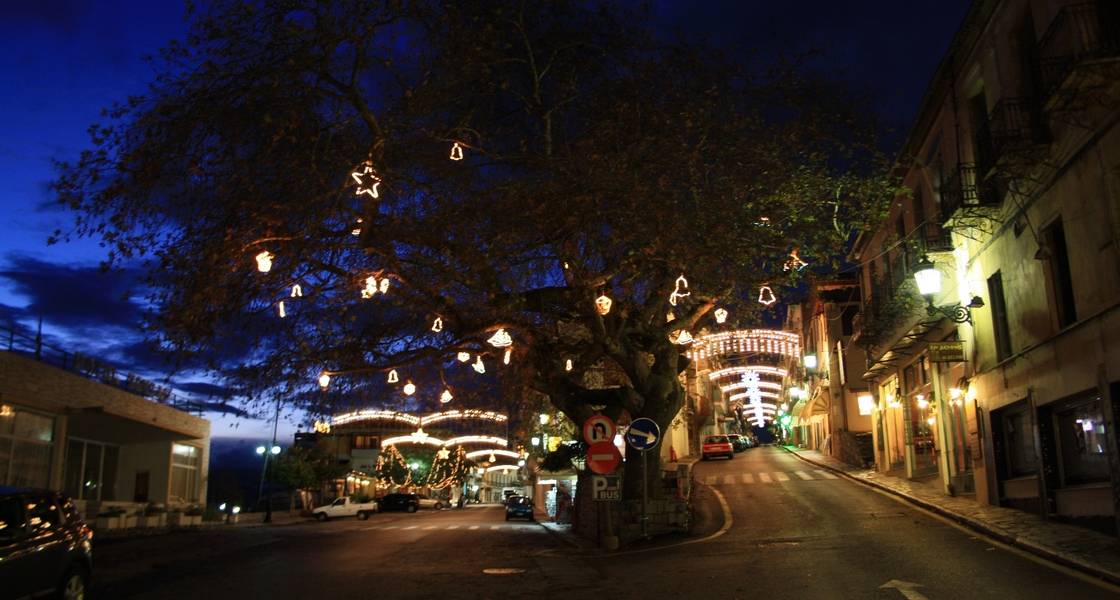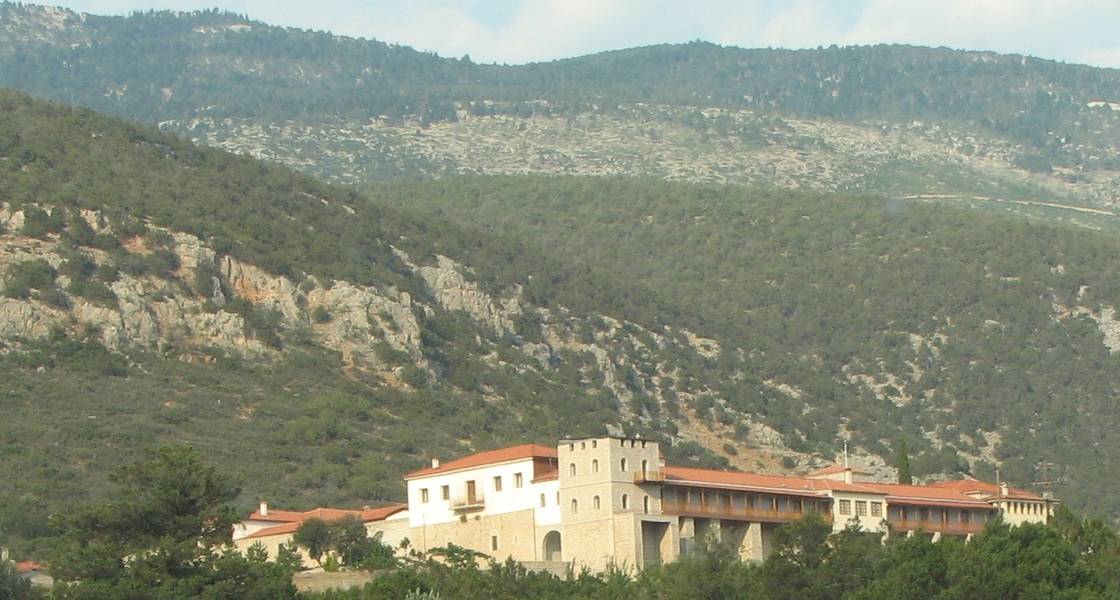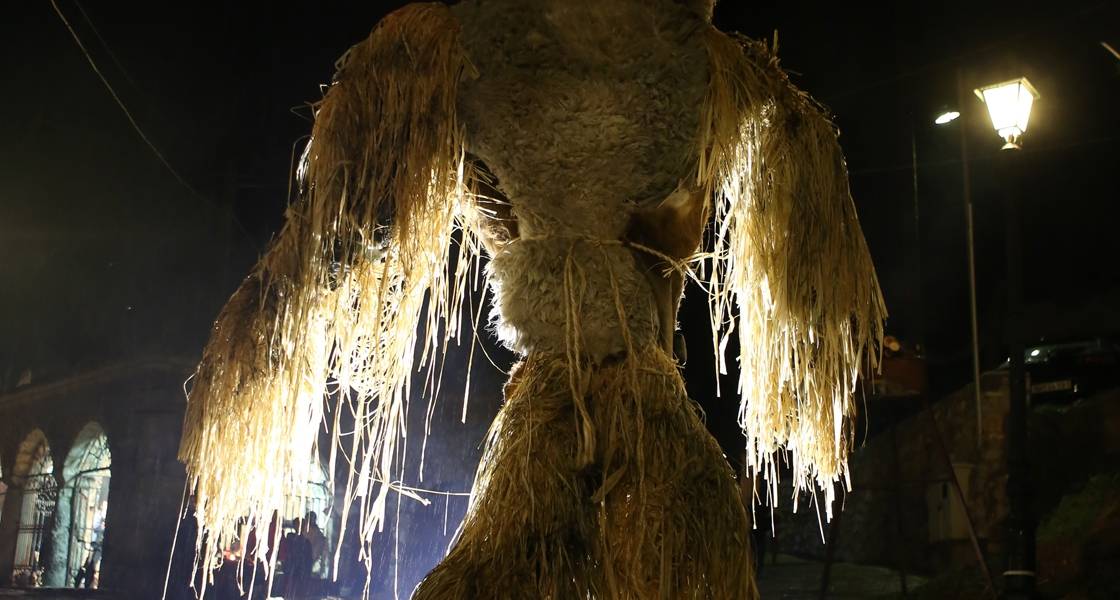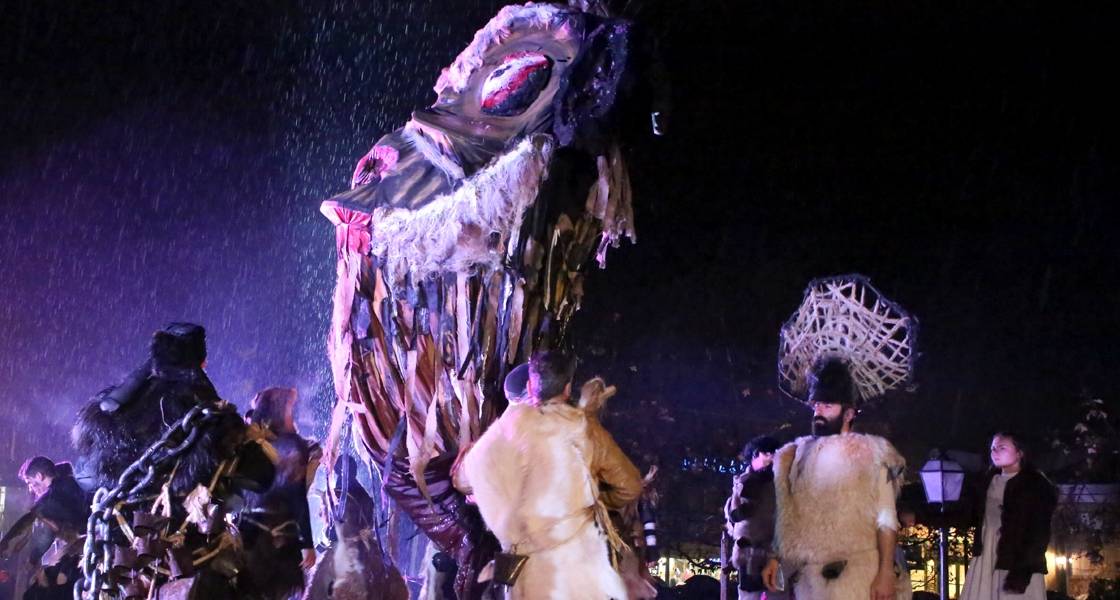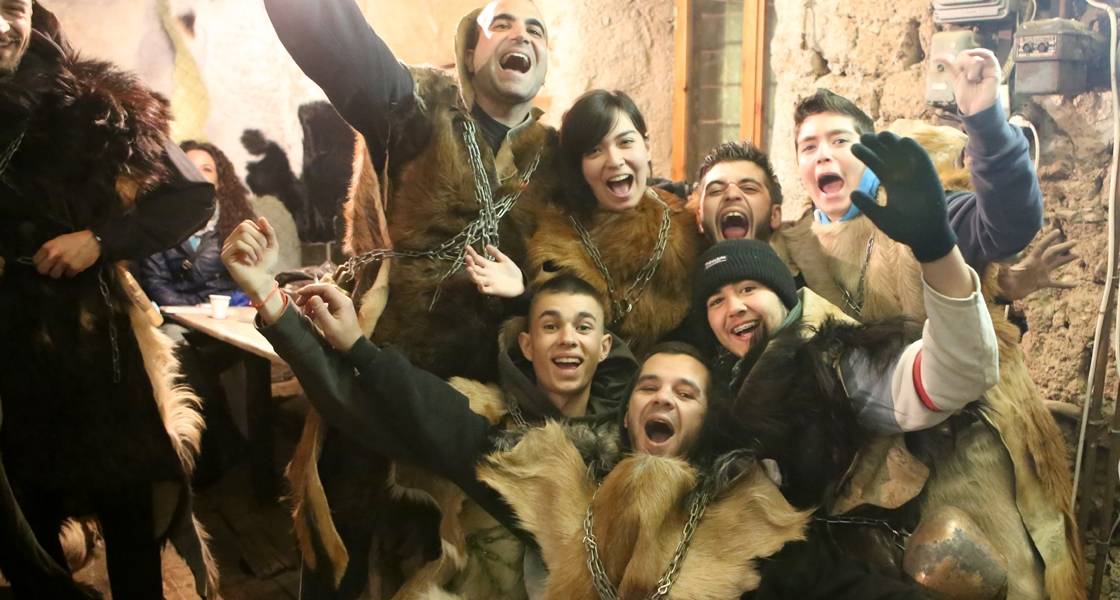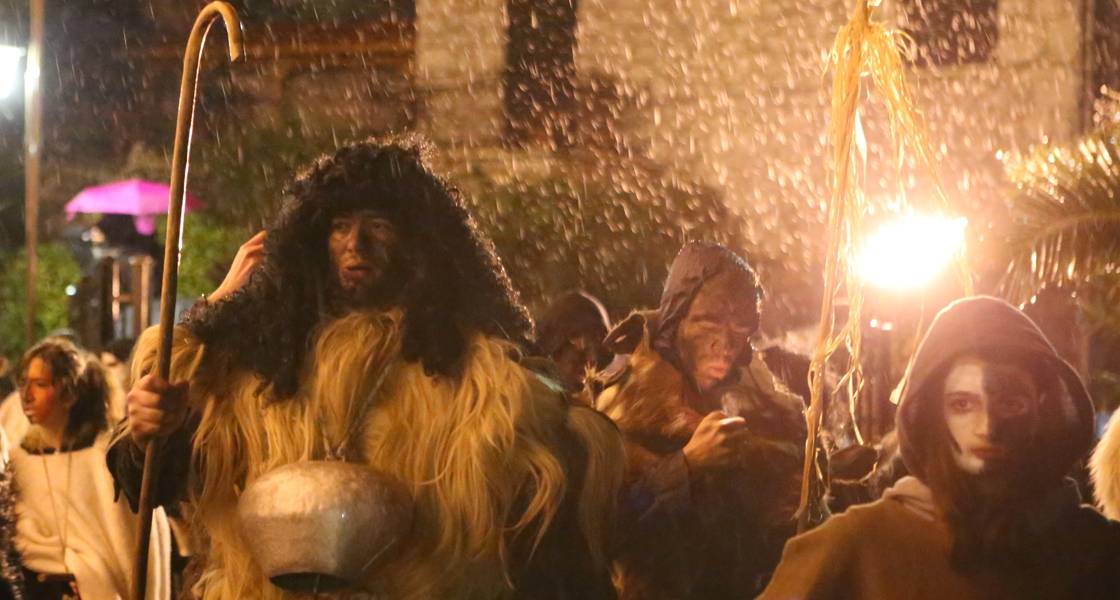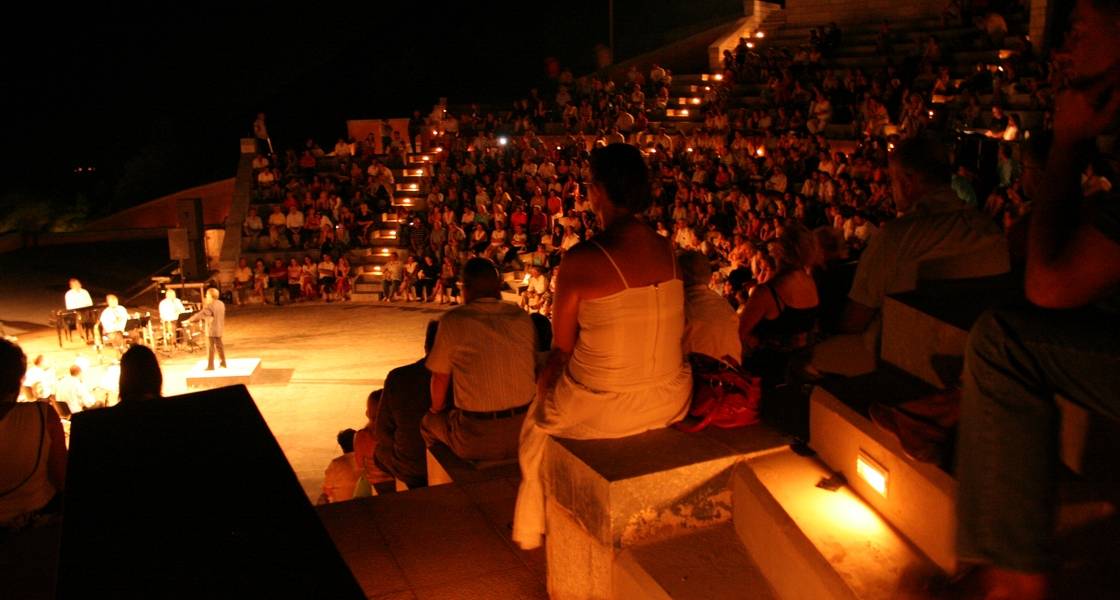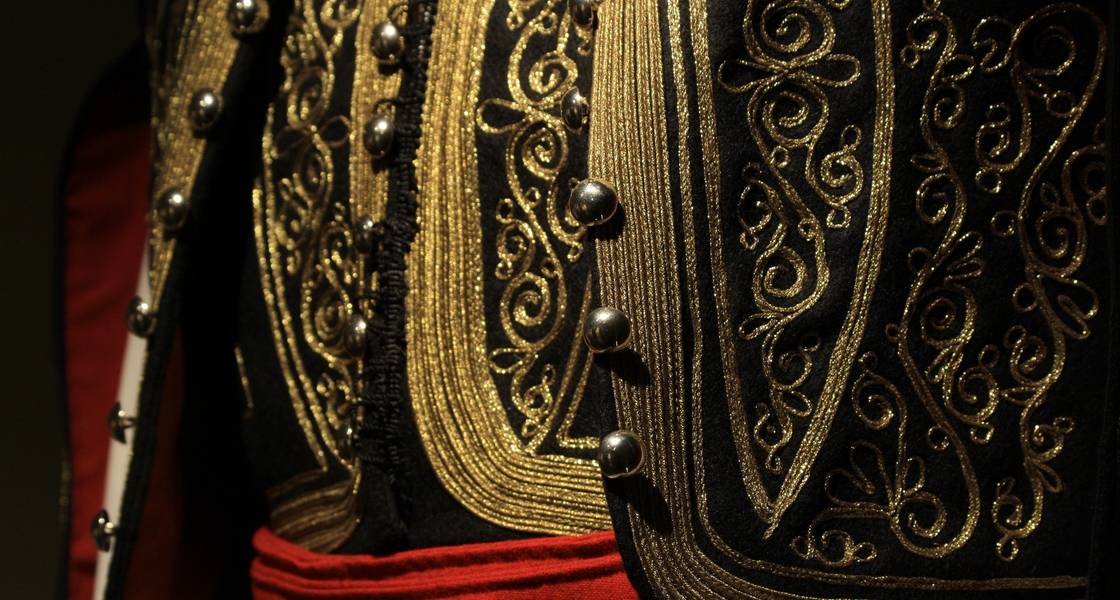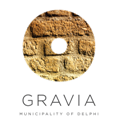Culture
Guide| Culture
Delphi, and Greece for that matter, is a land that carries a historical reality that many times surpasses the magnitude of the land. Over the centuries, the Delphic territory lived through civilizations, events and moments that left their unblemished mark.
Archeological sites, legends, castles, paths of revolution, traditional occupations, maritime superpowers, artists and writers and natural wealth, all form a place-crossroad that the present day visitor can become acquainted with.
Monuments & sites, museums, tradition, routes, festivals and historical celebrations make up the cultural network that will give you a better understanding of the most historical locations in Greece.
Delphi
Guide| Culture
Delphi, a UNESCO world heritage monument, was listed as one of the most sacred sites on Earth. Not without reason. On the slopes of Mount Parnassos, among the impressive rocky cliffs of the Phaedriades, the pan-Hellenic sanctuary of Delphi dates back to the neolithic period (4,000 B.C.). In the 8th century B.C. the sanctuary and the oracle start to evolve. Delphi becomes the seat for the "Delphic Amphictyony", a federation of twelve Greek cities with religious and political significance. In the 6th century B.C. the sanctuary established its independence and influence throughout Greece. It organized the Pythian Games every 4 years, the second most significant athletic games in ancient Greece following the Olympic Games. Between the 6th-4th century B.C. the oracle is at the peak of its glory and worldwide reputation.
The oracles are spoken from the Pythia, the priestess of the Oracle, and are interpreted by the priests. Towns, rulers and commoners would seek the advice of the oracle bringing with them great offerings. The power of the oracle brought about 3 sacred wars and the occupation by the Etolians and Romans before the Rationalist movement placed it in decline. The oracular process remained unaffected until the 2nd century A.D. It was the byzantine emperor Theodosius I that put an end to the Oracle. During Christianity, Delphi become the Episcopal seat, but was abandoned with the onslaught of the Slavs (7th century A.D.). Over time, the Sanctuary is gradually covered with earth on which the village Kastri was established. The recordings of Pausanias, the Greek traveler, revealed significant information for the subsequent reconstruction of the area. The 1891 excavations bring to light the Delphic sanctuary once again.
Enjoy a tour of the Archeological Museum and the Archeological Site of Delphi. 7 days a week, (8 a.m. – 8 p.m.). However, do not leave this visit for the last minute. The single ticket for all sites costs €9 for adults, which has a saving of €3. Concession (€5, €3) & exemptions are provided for all visitor categories (e.g. students, 65+, etc.). Be sure to wear comfortable clothes adapting them to the season of your visit. An umbrella in the winter and a hat in the summer will be useful. Restrooms and a canteen can be found in the museum's atrium area. In this area, you will also be able to purchase souvenirs. There is free wifi which will help you in your internet searches. Professional tour guides are available during your visit should they be required.
Tel.: (+030)2265082312, This email address is being protected from spambots. You need JavaScript enabled to view it.
Delphi Archeological Museum
Guide| Culture
Archeological Site of Delphi
Guide| Culture
Site monuments: The Temple of Apollo, the Treasury of the Athenians, the Stoa of the Athenians, the ancient Theater, the ancient Stadium, the Gymnasium, the Tholos.
According to a survey conducted by NGTO, the Athens Acropolis, Delphi and Olympia are the archeological sites that left the strongest and greatest impression on visitors.
Monuments
Guide| Culture
The monuments themselves reveal the history experienced by the entire Delphic land over the centuries. From the beauty of the Delphic Landscape, the incredible archeological site of Delphi, the legendary and awarded traditional community of Harmaina in Amphissa, the maritime town of Galaxidi with the timeless statue of the "Sailor's Wife" and the Ship Shelters of ancient Kirra, which were of great significance for the pilgrims' sea communication, to the revolutionary Castle of Salona, the manors of Galaxidi, the imposing acropolis of ancientLilea, the majestic springs and the temples of Ag. Eleousa at Polydrosso, the places and hideouts of the fighters of the Revolution of 1821 and the legendary and historical caves of tradition and heroic action such as the Korykio Antro at Mt. Parnassos and Stromi at Mt. Giona.
Delphic Landscape
Guide| Culture
A magnificent natural setting for as far as the eye can see that loses itself in the horizon and which is vividly described by UNESCO during its declaration as a World Heritage Monument
"This unique quality springs from an intimate harmony shared by the sanctuary in ruins and an unblemished landscape. One has to have cast a gaze from the gray sea of olive trees in the Valley of Pleistos below, to the glittering sea of the Gulf of Itea, to comprehend that the vocation of Delphi was to bring land dwellers and island-dwellers together for celebrations."
Harmaina
Guide| Culture
A province of Amphissa, which for years was home to all the leather tanning workshops. It is located south at a 500m distance from the historic Castle of Amphissa. Leather was treated in Amphissa long before 1600. Tanners of Harmaina remained at the peak of their glory until the mid war period. Gradually, following World War II, the province fell into decline due to the dynamic introduction of plastic, which replaced leather in many of its uses. Leather was treated with an abundant amount of water from the province's spring. There was also a widespread belief that the said water had the extraordinary properties of giving the Harmaina leathers the indelible and lustrous yellow tinge.
The Harmaina tanners primarily used the skin from goats. The task was manual, time consuming and the leather was treated with plants. Leather tanning was primary performed using acorn and pomegranate. Today, only a handful of leather tanning workshop remain in Harmaina that maintain the ancient technique regardless of modern developments. The province continues to charm both locals and visitors. The isolated and atmospheric alleys, the abandoned and renovated workshops, the spring and the old plane trees, the picturesque Toulasidi (a centrally located building in the province, which was the public leather tanning area in the past and is currently the cultural area of Amphissa) make up a unique Greek neighborhood of great history and architectural value. On the last Saturday of the Carnival, the impressive Legend of the "Ghost of Harmaina" is re-enacted.
Harmaina has been awarded by the EU with the EDEN2011 award.
www.harmaina.gr
The "Sailor's wife" an international monument
Guide| Culture
The maritime city of Galaxidi is home to the international monument dedicated to the wife of every sailor (located in the 'Kentri' area). Under the auspices of the International Maritime Organization (IMO) the city's great historic maritime tradition found the most essential and most beautiful personification through such a powerful monument and a worldwide statue of honor.
Every sailor usually leaves behind a family that loves him, misses him, dreams of him and yearns for his return. His wife is the family's pillar on land. The sailors' wives fall under a unique category. They play the role of both the mother and father and relentlessly keep the memory of the absent sailor alive. On the day of the unveiling, Mrs. Inger Tomelthy Teirsud, a sailor's daughter, wife, mother and grandmother from Norway, was honored. The monument was created by the sculptor Mr. Kostas Ananidas.
Kirra Ship Shelters
Guide| Culture
Kirra, known from ancient writers as the port of Delphi, was the destination of pilgrims and traders, who would continue onto the pan-Hellenic sanctuary after regaining their strength. The oldest habitation at Kirra dates back to the 3rd millennium B.C. The densely housed settlement was at its peak during the Middle Helladic period and during the early Mycenaean period. The ship shelters that can be found between the primary school and the playground were built during the 5th century B.C.
They comprised of at least five long apartments that were open towards the sea, where small ships could be dragged in for repair works.
In 2014, the students of the Kirra Primary School adopted this archeological area.
The Castle of Salona
Guide | Culture
It prevails over the city of Amphissa (Salona) as if it is still protecting it from the Roman, Byzantine, Frank, Catalan, and Ottoman conquerors of yesteryear. According to tradition, the Castle of Salona is one of the castles of Oria, (meaning beautiful in Greek), which hides the legend of the beautiful princess that jumped from the castle and fell to her death to avoid falling into the hands of the Turks. The castle will play a significant role in the Revolution of 1821.
On March 27, the city of Salona is surrounded and occupied by Panourgias and his men. 600 Turks are trapped in the Castle.
On April 10, Easter day, the Castle is the first to fall into Greek hands, which in the heart of Roumeli symbolized the start of their liberation.
The manors of Galaxidi
Guide | Culture
The majority of the city comprises of brick-built manors that are reminiscent of the city's wonderful past. The architecture was influenced by the resident's sailors who had traveled the world and had brought back building materials and craftsmen from their travels abroad. The first manors were built in 1850 although the European influence was evident. In fact, many houses have ceilings that are designed by Italian artists. Some of the manors that stand out for their style are the Bourzeiko that belongs to Katsouli, the Dedouseiko that belongs to Dedousi, the ship owner, the Moscholeiko, the Nineiko and more.
The acropolis of ancient Lilea
Guide | Culture
The impressive fortress of ancient Lilea dates back to the 4th century B.C. The walls have a trapezoidal wall structure and are maintained at a satisfactory height. At times, they are reinforced with rectangular towers, of which the central is distinct at the peak of the acropolis, which would visually monitor the entire valley from the upper reaches of the Kifissos river. Some parts of the ancient fortress have been altered or additions were made during the Frankish occupation (13th-14th centuries).
Traces of habitation in the area date back to the early Helladic period (3rd Millennium B.C.). Following the destruction of the cities of Fokida in 346 B.C. by Philip II, King of Macedonia, Lilea was cohabited with its neighboring city, Erocho (the borders of present day Polydrosso). Its walls were most probably built in the post Philip period, during the restructure of the acropolises of Fokida, although samples of an older fortress have been salvaged at the peak of the acropolis.
Aghia Eleousa
Guide | Culture
Located in the Lilea-Polydrosso region, in the northern valleys of the Fokida, one is still able to find the most abundant springs of the Kifissos river. Close to the Aghia Eleousa spring in Polydrosso, the Lileans created an area of worship where they would worship the god of the river and would bring great offerings with them. Preserved in the area are the foundations and architectural parts of the ancient drinking fountain and an imposing retaining wall that supported the temple that was dedicated to the river. In the early Byzantine period, these buildings of worship were replaced by the churches of Aghios Christoforos and Aghia Eleousa, which were constricted using much of the ancient building materials. Today, these springs comprise of one of the most beautiful tranquil and relaxing locations in Delphi.
The Paths of 1821
Guide | Culture
In Roumeli (Central Greece), the Greek Revolution of 1821 played a key role in Greece's existence. Its strong desire for freedom and independence as well as the land's geophysical-strategic environment triggered one of the most significant revolutionary movements in Greece at the time. From the Corinthian maritime centers in the south, the monasteries and hideouts in the cities to the caves, gorges and mountain tops of Mt. Parnassos, Mt. Giona and Mt. Vardousia, fighters that were loyal to the ideal of a liberated life, put an end to the subordination of their land by the Ottomans. The Delphic land constituted the heart of the Battle of this Revolution, which is why every small or large region constitutes a vivid reminder of those times.
Korykio Antro
Guide | Culture
A cave full of myths and legends and with findings from the Neolithic Period that is located on the western slopes of Mt. Parnassos, close to Delphi. An area with unique natural architecture that impresses with its amphitheatrical dimensions. Vessels from the Mycenaean period testify the sporadic use of the cave during that period. The abundance of materials from the Archaic, Classic and Roman period are of particular interest. The ankles of animals that are salvaged in large quantities constitute a remarkable finding. Certain researchers interpret the ankles as a child's game while others as items of worship or divination. The second version is consistent with the use of the cave as an oracle. It was also a place of revolutionary activity in 1821. A path leads from the "Paliopanagia" region to this unique, natural and historical cave.
Cave of Stromi
Guide | Culture
A small cave close to the Stromi village that is nestled in foot of Mt. Giona. Today, also known as the "Cave of National Resistance", it is a significant historical monument, a point of reference for the Battle of Independence and a symbol of National Unity and Solidarity. It was the secret meeting place that was offered as a refuge to Greek and British paratroopers in the autumn of 1942, where they planned the first great act of resistance of blowing up the Gorgopotamos Bridge (25.11.1942) and the coordination of the two main Greek Resistance Organization's acts was achieved. Today, the National Resistance during the period of the Occupation is officially celebrated at the cave, which ensures to preserve the memory of that period in everyone's mind.
Museums
Guide | Culture
History, memory, and experience are three basic characteristics that are offered from the museums found on Delphic Land. The incredible Delphi Archeological Museum, the Maritime Museum of Galaxidi, the Archeological Museum of Amphissa, the renowned Gravia Inn, the Athanasios Diakos Museum in the homonymous village, the Museum of Angelos & Eva Sikelianos at Delphi, the Museum of the Bishop Isaiah in Desphina, the Folklore Museums of Chrisso, Galaxidi, Kaloskopi and Kastriotissa, the "Vagonetto" Mining Park at Giona, the Panourgia Residence that will accommodate the documentation center concerning great topic of the "Paths of 1821". Whatever your desire, do not hesitate to experience each museum of this blessed Delphic Land, in the heart of Greece.
Delphi Archeological Museum
Guide | Culture
One of the most important archeological museums in Greece, it presents the history of the famous Delphic sanctuary and the renowned oracle of the ancient Greek world. The wealth of its collections comprises mainly of architectural sculptures, statues and small works of art, the offerings by the sanctuary's worshipers, which reflect its religious-political and artistic activity throughout its history, from the establishment of the Temple of Apollo in the 8th century B.C. to its decline in the post antiquity period. It has fourteen exhibition rooms and a conservation laboratory for pottery, metal objects, and the restoration of mosaics.
Its permanent exhibits comprise of: The "Charioteer", the Naxian Sphinx, Kleobis and Biton, the "Omphalos", the "Siphian Treasury" and more.
Archeological Museum of Amphissa
Guide | Culture
The Archeological Museum in Amphissa offers the visitor a full view and a historical account of ancient Fokida. It hosts findings that originate from Amphissa and other places in the Prefecture of Fokida, which concern the centuries that date back to the Copper Age to the early Byzantine period. The museum is housed in a typical two-story urban residence of the early 20th century, one of the very few of its kind that have been preserved in the city. The museum is interesting in terms of its exhibits and period that it represents and it simultaneously marks the history of both the people of Salona and of Modern Greece. Except for the exhibits concerning the history of Amphissa and other areas of Fokida, the educational exhibit on the history of the coinage holds a special place.
Maritime Museum of Galaxidi
Guide | Culture
One of the leading maritime museums in Greece. The building was built in 1868-1870; however, following the last restoration in 2000, it is now a modern museum for the visitor. It hosts three thematic exhibitions. The historic exhibition that focuses on local history, the archeological exhibition that has unique findings of the relative period and finally the impressive maritime collection, which, on an international level, is one of the most interesting. Paintings of sailing ships, nautical instruments, ships' logs, parts of ships and the unique "Argonauts" philatelic collection with nautical topics and global recognition. Also, kept in a special showcase is the book "Galaxidi Chronicle", which was published by K.N. Sathas in 1865 and constitutes one of the most important sources of historical documentation of our land.
Museum of Angelos & Eva Sikelianos
Guide | Culture
Formerly the residence of the Greek poet Angelos Sikelianos and his wife Eva, this building has been converted into a museum in their honor in a place that carries the positive energy of the Delphic Land. Built on the western side of Delphi during the first Delphic Festivals (1920), it is located next to the archeological site of Delphi and houses props from the revival of the Delphic Festivals that the couple organized in Delphi during the 1927-1930 period, costumes from ancient drama performances (in the conservation phase) as well as personal items that belonged to the Sikelianos'.
Tel. Visitors' contact number: 6944 122219
Folklore Collection at the Cultural Center of Kaloskopi
Guide | Culture
When the primary school closed down in Kaloskopi in 1987, the building was handed over to the Cultural Center of Kaloskopi which would exhibit its permanent exhibition "History&Folklore of Kaloskopi". The 1998 renovation made room for the exhibition of abundant photographic material, items that represented the battle of life and were a testament to local tradition and culture. Traditional costumes, tools belonging to artisans, farmers, and households were the main items being exhibited. Among these were the workshops of the saddler-blacksmith and shoemaker. The center operates on a daily basis in the summer months, while it is advisable to contact 22650 61251 during the remaining months. At the center you will find, books written by Kaloskopian authors, cards, journals and depending on the season, traditional products and homemade sweets made by the Kaloskopian women in support of the Center. http://kaloskopi.gr/?page_id=77
Ethnological & Folklore Museum of Chrisso, Elia Daradimou Collection
Guide | Culture
At a 5km distance from Delphi, one can find the Ethnological & Folklore Museum in the traditional village of Chrisso. It is a new museum, which is fortunate to be housed in one of the most beautiful buildings in our Municipality. The recently renovated old school of Chrisso, which was designed by Ernst Ziller, houses the large timeless collection of Elia Daradimou from Chrisso, which comprises of a total of 230 items and consists of authentic and full traditional and folk costumes from all over Greece, rare engravings from Fokida, rare photographs and documents from the 19th century, traditional furniture, utensils and musical instruments. The museum is almost complete and is shortly preparing to welcome its first visitors.
Folklore Museum of Kastriotissa
Guide | Culture
Driven by their love for their land, the Women's Group put a lot of effort into the Folklore Museum of Kastriotissa, which was founded in 1988. The Group gathered old items of folk art that represented the Folk Culture of Central Greece and Greece as a whole, which were generously offered by locals and friends of the Group. Authentic traditional costumes, items from the rural and pastoral life, household items, woodcarvings, embroidery, textiles, old photographs, documents and commemorative and honorary medals illustrate the history of the heroic lands of Kallieis and Fokida and are a testament of years gone by and the people's sacrifices during the liberating battles. There are more than 1000 folklore items on exhibition. Group's contact tel.: 2109826565, 2109831673
"Vagonetto" Mining park
Guide | Culture
As of 2003, the "Vagonetto" Mining Park in Fokida, is a unique theme park, situated at the 51st km Lamia-Amphissa National Road in Greece, between Mt. Giona and Mt. Parnassos, within the premises of the S&B Industrial Minerals S.A. The Theme Park presents the operation areas of a mine, while educating and recreating around the history of bauxite mining and the miners that worked there, honoring and promoting the mining history of Fokida. The acquaintance with the history of bauxite begins in the old mine, Underground Gallery 850. The tour continues onto the Exhibition, the Interactive Digital Technology Wing and concludes at the Open-Air Machinery Exhibition.
Panourgia Residence
Guide | Culture
In Amphissa, the residence of Ioannis Panourgias, a Fighter of the Greek Revolution of 1821 in Roumeli, will constitute a documentation center of the great and unique cultural-tourist route "The Paths of '21" once the restoration and redevelopment works are completed. A historical route for Greece, which via documentation and new technologies, will bring the heroes and events to life in the same, authentic locations of one of the most incredible revolutionary actions that took place in Greece during the 1821 period. Thus, each historical location and its actions will be mapped and two centuries later, the visitor will be able to experience the true dimensions of the moments that history had in store for the fate of people and situations.
Athanasios Diakos Museum
Guide | Culture
Located on the slopes of Mt. Vardousia, in his birthplace once known as Ano Mousounitsa (now Athanasios Diakos) is the Museum that was created in 2009 in memory Athanasios Diakos, one of the most heroic figures in Greece. The hero of the Greek Revolution of 1821, who sacrificed his life for the freedom of the following generations. The exhibits outline the conditions and the periods in which Diakos lived and fought. Authentic items and replicas, combat gear, costumes, documents and stamps lead the visitor to the traces of a great Greek figure. The Museum is able to host events and presentations in an imposing natural environment that takes us back to the heart of historical Roumeli.
www.athanasios-diakos-museum.gr
Gravia Inn
Guide | Culture
Located in Gravia there was once an Inn for passing travelers. However, on May 8, 1821 it was converted into one of the Greek people's most powerful symbols of courage, decisiveness, and selflessness. It was the day that the fighter Odysseus Androutsos and his 118 men use the Gravia Inn to stop the Ottomans from passing through Roumeli and Southern Greece. Although they were few in numbers, they managed to stop an entire army. The Inn was reconstructed at the end of the '90s. Today it stands as a powerful monument that transfers the atmosphere of that period and allows visitors to travel back in time and experience - even for a short while- the intense energy that is emitted from the land on which people, who truly believed in the ideals of freedom, once lived.
Folklore Museum of Galaxidi
Guide | Culture
It is located in Chrolaka, the second smallest port of Galaxidi, since its inauguration in 1994. Its rich collection consists of a variety of over 1,000 items. It comprises of local wooden items and wood carvings, paintings, costumes, embroidery and textiles, jewelry as well as rural items, old fishing tools, loom, hard-to-find “metzalia”, lace making instruments, household items, complete shoe making shop and other items, such as lithographies, old contracts, dowry agreements, letters, photographs.
Our tradition
Guide | Culture
The Delphic land, the heart of Greece, was always a great crossroad for civilizations. From the prehistoric Greek tribes to the modern day residents of Fokida, customs, habits, and traditions have been maintained in one way or another, and can be found in our daily lives and in the significant and small moments of our land. The connection with the earth, the livestock, the artisans, the legends, the stories, the festivities is all marked on the stones, water, and forests. Wherever you walk, swim, eat, or rest, do not be surprised if a story from the past makes you see life from a different perspective. In blessed lands, such as Delphi, memories live on and they have been waiting for a long time for you to meet them.
The olive
Guide | Culture
Our land is blessed with millions of olive trees in the largest olive grove in Greece. The olive grove of Amphissa. An olive grove that has been giving its fruit, oil, wood, leaves and grass for centuries. An olive grove that captivates the eye like a large green sea that calms the soul and offers precious gifts of life. The people of the olive grove work hard every day together with nature to preserve the unblemished traditional character of the land. The planting, nourishment, lopping and harvesting is passed down from generation to generation with the hope that process will never end.
Leather
Guide | Culture
Our land continues the five-century-old tradition of treating leather. The tanning center was in the old neighborhood of Harmaina, which experienced great times with the leather tanners that it would accommodate. Leather treating was always a process that which required great effort. The natural treatment process made it even more difficult. Amphissa leathers, the best quality in the market, have traveled and travel the world and adorn libraries, files, objects, and accessories. This tradition continues to this day by the few families that still associate with leather and the same manual process that gives the unique value to the final result.
The Oracle
Guide | Culture
According to history, our land is considered one of the most sacred on Earth. For centuries, Delphi and its sanctuary was a pilgrimage, where no one was the same after the visit. Pythia, the priestess of the oracle, would give the unique oracle to those that arrived ready to hear about their future. In order to receive, they first had to make an offering. On many occasions, what they would hear was enough to change their lives or the fate of an entire population. The journey to Delphi was so important that a double road was constructed for the Athens-Delphi carriage route. Of course, there was also the sea route from the port of Kirra. Many of the offerings made by the pilgrims still adorn the modern day Archeological Site of Delphi.
The mountains
Guide | Culture
Our land is unique as 4 strong and tall «guards» surround it. Mt. Giona (2,510m), Mt. Vardousia (2,495m), Mt. Parnassos (2,457m), and Mt. Oiti (2,152m) are the mountains with which nature has blessed this Delphic land. Incredible geophysical landscapes and breathtaking peaks meet deep gorges and alpine landscapes that come together with the rich flora and fauna that are unique in Greece. The ski center, refuges, mountaineering routes, rock climbing, hiking paths, touring stations, and national parks make up our mountains' heritage that can be enjoyed by everyone all year round, depending on their needs. A broad network of roads and routes promises to bring you in touch with the wild beauty of the southern backbone of Pindos, in the heart of Greece.
Our diet
Guide | Culture
Our land has been blessed by nature, which open-handedly offers both the land and sea for the nourishment of its residents and visitors. With a developed animal husbandry, we eat plenty of meat, which of course is cooked on the spit, whether this is lamb, port, sheep or mutton. We are also a vegetarian's delight with the amazing wild greens and herbs that can be found on our mountains. Our superb honey and splendid dairy products will remain etched in your mind. The olive and oil are "at home" here. The largest olive grove in the country takes care of that. Rusks, pies, pancakes, mushrooms, swordfish, bream and black fish, citrus fruit and shrub fruit all ensure that we enjoy the best of the Greek Mediterranean diet.
The sea
Guide | Culture
Our land has a huge maritime tradition and has a 100km coastline. From the Rivers and Makrynikola peninsula in Desphina, Ai Mina, Kirra and the cities of Itea to the Galaxidi coves, Ai Vasili and the tranquil waters of Aghii Pantes. The historical sea of the Crisaean cove and the Corinthian Gulf that receives the refreshing spring waters of the Pindos mountain range and the snow-covered mountain tops. Whether swimming or taking a sea tour in the crystal waters of beaches that are isolated, organized or otherwise and that bear blue flags is a true delight. Whether by yacht or speed boat you can navigate through the impressive islet and coastal complex and possibly meet some modern day cruise ships at the tourist ports of Itea or Galaxidi.
The castles
Guide | Culture
For centuries now, our land has been a significant crossroad for people and civilizations. From the Dorians, Macedonians, Persians and Romans to the Crusaders, Byzantines and Ottomans, the Delphic land has always been a stronghold of key significance. In their own way, the castle of Salona, the castle of ancient Halley (presently Galaxidi) and Myonia (Aghia Efthymia), the acropolis and castle of Lilea, the castle of Kastriotissa, all attest to the importance of a land that was always the passage from Central Greece to the Corinthian gulf. The present day monuments of these castles make the mind travel to the historical periods that actually left their mark.
The Battle of 1821
Guide | Culture
Our land was one of the most important points in the Battle of the Greek Revolution in 1821. Here, in the heart of Roumeli, moments, fighters, ideals, and battles changed history forever. Every location of the Delphic land can narrate its own historical account that gradually led to their independence. "The paths of '21", a journey back in time, constitutes a historical documentation that links the facts with the people in a human geography that each Greek citizen and every visitor should experience. Shortly, the "Panourgia Residence" in Amphissa will house the core of this documentation that will give rise to the experimental exploration of the sparsely-located historical sites themselves that continue to attest to the intensity of those times.
The waters
Guide | Culture
Four imperiously high mountains (Mt. Giona, Mt. Parnassos, Mt. Vardousia, and Mt. Oiti) ensure that the Delphic nature enjoys a great natural spring network. Springs that do not allow our land to ever become thirsty. They run freely from everywhere and give life just as the water element knows how. At some point, in a town, in a village, in the middle of the forest, in the road's cliffs, there will be a spring that will respond to the man's eternal longing for water and it will make all the senses feel like this land is one of the few blessed lands in Greece.
The "Chronicle of Galaxidi"
Guide | Culture
The hand-written historical account of the history of Galaxidi is one of the most important historical artifacts of the Delphic land and it is kept at the Maritime Museum of Galaxidi. The unique manuscript is attributed to the monk Efthymios who composed the text in 1703. The manuscript was discovered in the ruins of the Monastery of Sotiros in 1864 by the pioneering Greek scholar Konstantinos Sathas, who published his edition in 1865. The text is written in a 20 page edition and according to its author it is based on official documents and historical texts which were not salvaged. It is considered a significant historical source, while it is an interesting example of culture of the spoken language with literary value that stems from its simple and lapidary style.
The festivities
Guide | Culture
In our land, there is a reason, whether large or small, behind every festivity. One memory, one moment, one event. For this reason, when the time comes, everyone takes part. From the festivity of Love at Easter, the memory of a Saint and of a Resistance to the revival of a historical moment, to Carnival partying or the enjoyment of cultural institution, moments that are appreciated through the sharing and hospitality that is rooted deep in our soul and culture. If you happen to be here during a festivity, do not hesitate to let yourself get lost in the moment and become one of us even for a short while.
The monasteries
Guide | Culture
Our land is home to unique monasteries that have been the life of our history and tradition. Monasteries such as the Prophet Elia of Chrisso, Prodromos of Desphina, Panagia Varnakovas, Sotiros and Galaxas of Galaxidi are true to the Orthodox faith like spiritual refuges in difficult times.
As you pass through the Delphic land, you will come across sparsely located monuments of Orthodox faith that did not stand the test of time but maintain the unique memory of their existence marked in each trace of their construction or hagiography. As for the monks, who also marked these monuments with their lives, the memory is not lost, but travels into eternity.
The Saints' artifacts
Guide | Culture
Delphi, which has been characterized as a sacred land over the ages, has the honor of hosting some of the most sacred holy relics of Orthodox church. At the Church of Aghios Nikolaos at Delphi you will be able to pray to the relic (hand) of Aghios Nikolaos, who as the patron saint is also the protector of the city of Delphi, as well as the relics of Aghios Georgios, Aghia Paraskevi, Aghios Charalambos, Apostle Timotheos and the church's other saints. A heritage that has constituted a point of reference for every true believer over the ages.
Carnival
Guide | Culture
One of the unique periods for Delphi. Amphissa and Galaxidi hold the lead in these festivities. On the last four days before the commencement of the Forty-day Lent, the "Ghost of Harmaina" and the fascinating story of Constandis the tanner comes to life in Amphissa, whereas on Shrove Monday the "Flour Smudging", one of the most amazing events in Greece during that period commences in Galaxidi and it is worth experiencing it in person. Tsiknopempti (Barbecue Thursday) in our land is a culinary ritual, while on the Sunday of the Carnival, Itea celebrate the "Neratzitia" (Bitter Orange Day). The kite is typically flown high on Shrove Monday and the special fasting delicacies of each city flood the atmosphere with their aromas.
The "Ghost of Harmaina"
Guide | Culture
We are in Amphissa and it is the revival of the legend of Constandis the tanner, who appears at the end of the Carnival as a Ghost in pain after losing his beloved Lenio at the Harmaina spring and battles with the other Ghosts of the other springs on the "Night of the Ghosts", on the last Saturday of the Carnival celebrations. Prior to this, in a festive atmosphere and good cheer on the last Friday of the Carnival, the people of the Harmaina community through "Ghost Calling”, invite the Ghost of Constandis to appear, for the partying to begin. The festive atmosphere that is created in Amphissa must be lived during an unforgettable carnival experience. http://www.harmaina.gr/index.php/2011-03-28-14-25-05
"Flour smudging"
Guide | Culture
We are at the picturesque maritime city of Galaxidi to experience Shrove Monday and one of the unique moments in the carnival festival in world. A custom that is lost in the depth of time and which originates from foreign influences that are transferred to our land via the flourishing maritime power of that time. With the port of the city at the epicenter, a casual "war" breaks out between the people, the visitors, and whoever wishes to take part. A Dionysian-type festivity, where flour, paint and water are the basic resources in the festive "battle". People of all ages, primarily the young and those that are young at heart, sing, dance, play music, are teased and smudged in good spirit and freedom that turns into a superb party that waits for you to live it.
Tsiknopempti (Barbecue Thursday)
Guide | Culture
In Greece, one week during the Carnival is dedicated to meat that is the reason it is named "Kreatini" (Meat week). With Wednesday and Friday being considered as days of lent in the Eastern Orthodox religion and the Forty-day Lent approaching, the Thursday in the "Meat week" is dedicated almost exclusively to the consumption of meat. In our land that has a rich animal husbandry and is known for its magnificent meat and its meat delicacies, Tsiknopempti truly celebrates the smell of cooked meat that flood the towns and villages, a smell that gets in your nose and provokes-invites people to taverns and homes to taste the traditionally-cooked meat in the way we have known for centuries.
"Neratzitia" (Bitter Orange Day)
Guide | Culture
We are in Itea, where its water and climate adorns every road and home. An environment, which the city helped to flourish with bitter orange and other fruit trees. Bitter oranges, which we stop to smell or kick around when they fall to the ground or enjoy as a delicious spoon sweet, simply and easily sweetens us during the lent. On the Sunday before Shrove Monday, the celebration requires for the public preparation of the "bitter orange spoon sweet" at the port. A sweet that we will pleasantly enjoy until we empty the jar. Until then, under the warm embrace of the Bitter Orange Tree that awaits us, let us turn all our bitterness into sweetness, whether it is for taste or for our soul.
European Cultural Center of Delphi
Guide | Culture
One of the leading European culture centers was founded in Delphi in 1977 under the auspices of the Council of Europe. The center has been a fruit for thought, ideas, and desires of the intellectual world or otherwise from the beginning of the 20th century. Presently, the ECCD is a live European culture-production and promotion unit. At the Center at Delphi an ongoing cultural process takes place that focuses on man and his creations, history and its cultural forms, the birth of ideas and proposals that aim at creating the materials required nowadays for our cultural future. The summer at Delphi is directly linked with the operation of the Center and all of the activities that its hosts. www.eccd.gr
The position of the European Cultural Center of Delphi alone indicates the ideal cultural production, hospitality, and promotional level. Building facilities of a high standard and an incredible natural environment that overlooks the spectacular Delphic Landscape constitute the ideal location for the ECCD so that it is able to respond to the purposes of its foundation which are none other than to "serve the international cultural interest" and to "develop the common cultural principles that unite the people of Europe". As of 2004, the ECCD also has the new, ultra-modern open-air theater "Frynihos" that hosts Greek and foreign theatrical and musical performances and events. The Center's conference and exhibition halls guarantee activities of a high standard, while its guesthouse ensures ideal accommodation. http://www.eccd.gr/template/map/hover.html
"Frynihos" open-air theater in Delphi
A modern open-air theater with a seating capacity of 1,100 on two walls with an amazing stage. It also has six dressing rooms with bath and wc, elevator, access to persons with disabilities, a parking area and tickets sales stand.
The Paths of 1821
Guide | Culture
In Roumeli (Central Greece), the Greek Revolution of 1821 played a key role in Greece's existence. Its strong desire for freedom and independence as well as the land's geophysical-strategic environment triggered one of the most significant revolutionary movements in Greece at the time. From the Corinthian maritime centers in the south, the monasteries and hideouts in the cities to the caves, gorges and mountaintops of Mt. Parnassos, Mt. Giona, and Mt. Vardousia, fighters that were loyal to the ideal of a liberated life, put an end to the subordination of their land by the Ottomans. The Delphic land constituted the heart of the Battle of this Revolution, which is why every small or large region constitutes a vivid reminder of those times.
The Battle of 1821
Our land was one of the most important points in the Battle of the Greek Revolution in 1821. Here, in the heart of Roumeli, moments, fighters, ideals, and battles changed history forever. Every location of the Delphic land can narrate its own historical account that gradually led to their independence. "The paths of '21", a journey back in time, constitutes a historical documentation that links the facts with the people in a human geography that each Greek citizen and every visitor should experience. Shortly, the "Panourgia Residence" in Amphissa will house the core of this documentation that will give rise to the experimental exploration of the sparsely located historical sites themselves that continue to attest to the intensity of those times.










